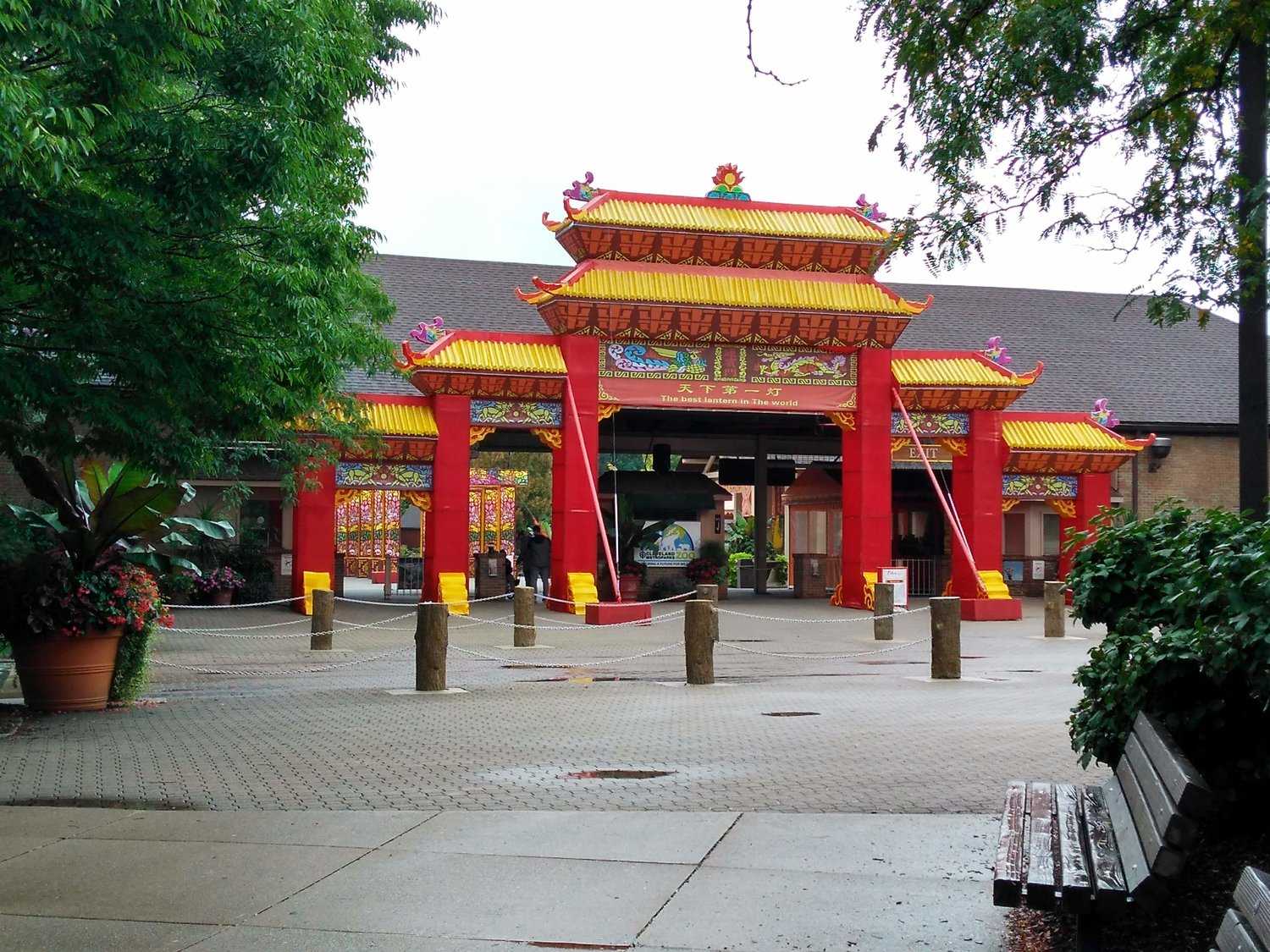As if a visit to the zoo isn’t exciting enough, visitors to the Cleveland Zoo during our wet, hot Cleveland summer enjoyed yet another feast for the eyes:
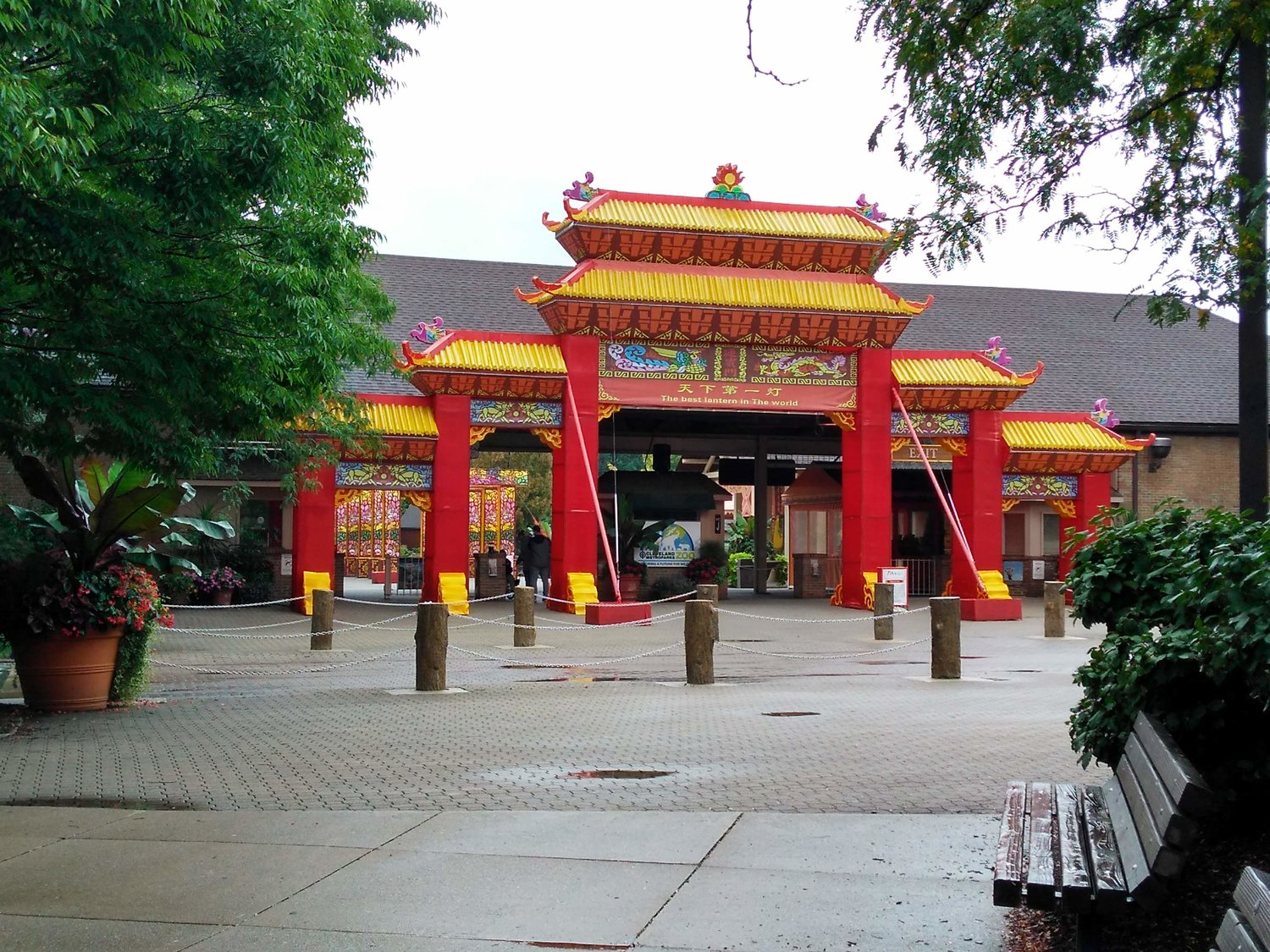
The dazzling Asian Lantern Festival, featuring hundreds of large, brightly-colored lanterns spaced throughout the grounds, celebrates Asian culture while highlighting the Zoo’s newest exhibit featuring Asian Highlands.
As the latest destination in the Cleveland Metroparks Zoo, Asian Highlands joins a storied tradition that began back in 1882, when Jeptha H. Wade donated 73-acres of land and fourteen American deer to the City of Cleveland in what is now University Circle’s Wade Oval. The arrival of the Cleveland Museum of Art in 1916 necessitated the move of the zoo’s tiny but growing collection of animals to its current location in Brookside Park near W. 25th Street.

Most of the zoo’s early menagerie were species native to the area, though there were some rather large exceptions: Minnie, Cleveland’s first zoo elephant, joined the collection in 1907. By 1940 the zoo had added Monkey Island, Sea Lion Pools, and a bear exhibit. November 1940 brought an Asian elephant, Frieda, a favorite with zoo patrons until her death on 27 November 1956, at the age of 56 to 76 (estimates of her exact age varied). Her popularity no doubt contributed to the establishment of an African safari by dedicated zoo staff and enthusiastic supporters in 1955, adding two hippopotamus, two rhinoceros, three giraffes, a variety of smaller animals, and three additional elephants, plus Frieda.
The zoo received great patronage from the people of Cleveland, who approved $1 million bond issues to construct the Bird Building (1950) and Pachyderm Building (1955). At its official opening in 1956, the Pachyderm House’s Master of Ceremonies Gordon Stouffer (son of the Stouffer Foods founder) was almost trampled by a horde of excited children. The method used to train those elephants is now known as elephant school; training such large, strong animals to follow commands is essential for the health and vitality of both animal and human trainer. (Now if only we could train small children to not stampede unfortunate masters of ceremonies ….)
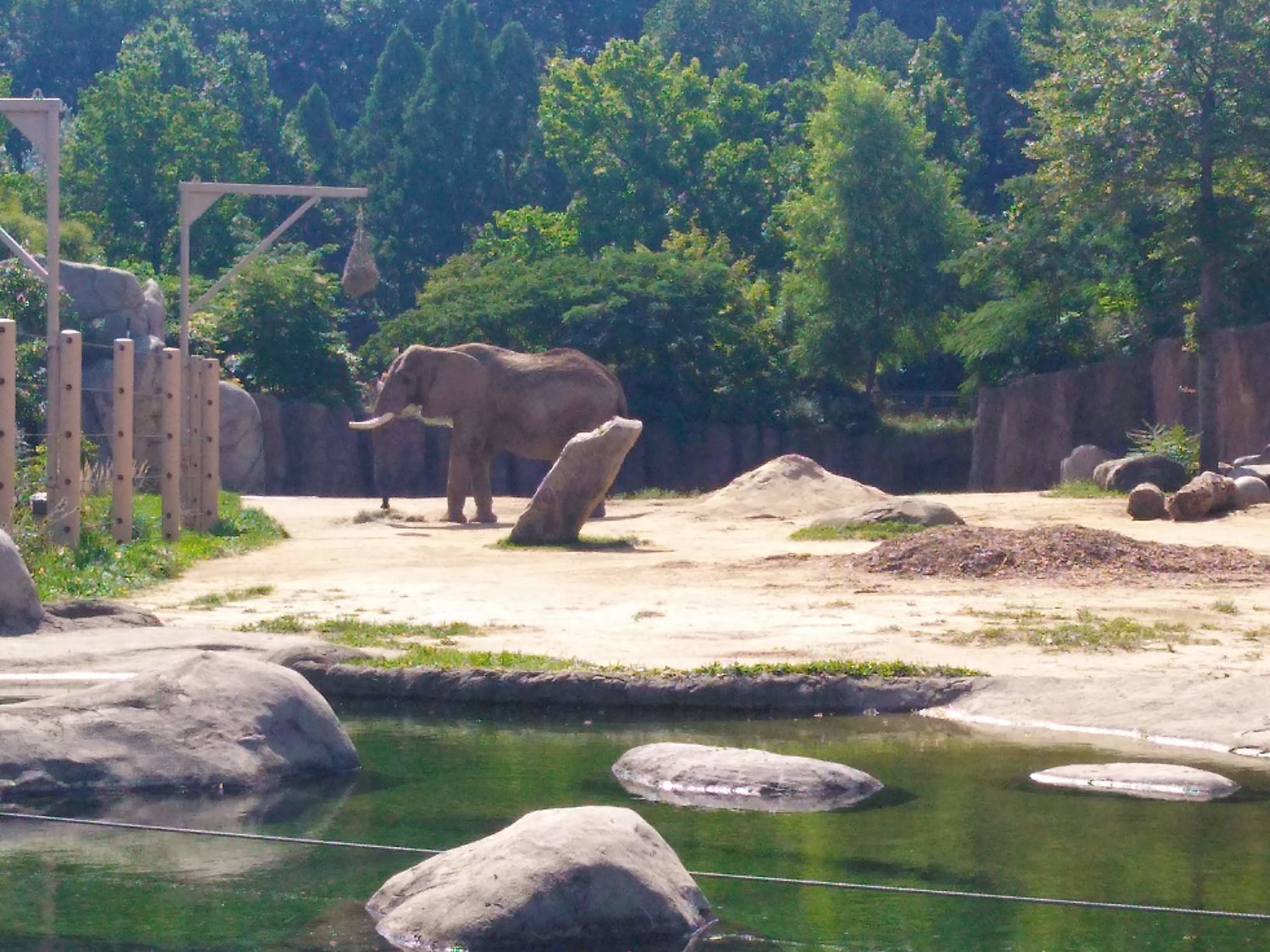
April 1957 saw the founding of the Cleveland Zoological Society, who took over the operation of the zoo under contract with the city of Cleveland. The Society ran the zoo until the 1970s, when it came under the control of the Cleveland Metroparks.
Amidst bell-bottom jeans and man-perms (looking at you, Dad) the zoo built the Primate & Cat Building (1975) and moved its original building, the Wade Deer Park Barn, from Wade Park to its present location next to Waterfowl Lake.
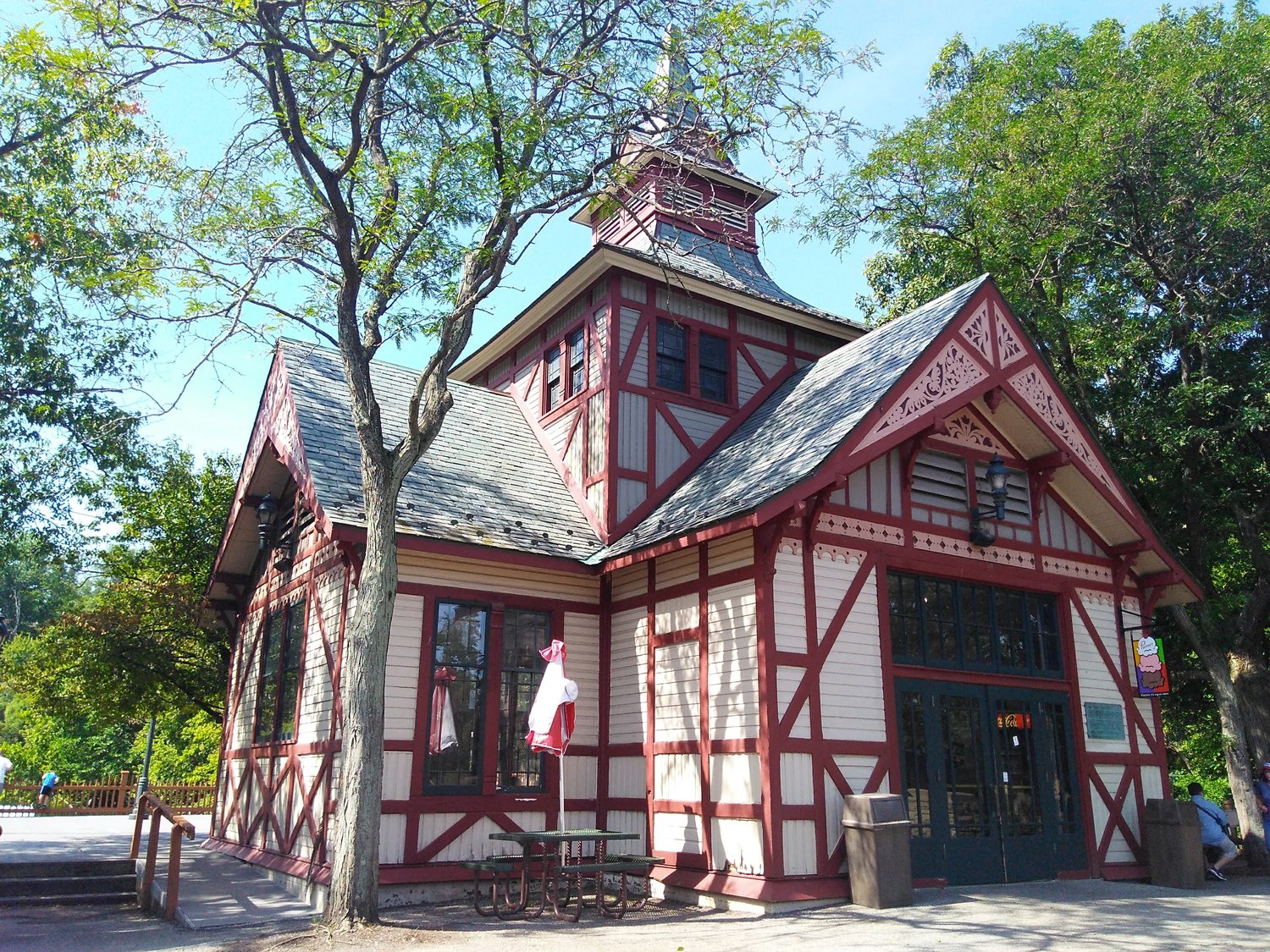
From 1989 on, the zoo has continued to expand, adding The RainForest (1992), Wolf Wilderness (1997), Australian Adventure (2000), The Sarah Allison Steffee Center for Zoological Medicine (2004), African Elephant Crossing (2011), Rosebrough Tiger Passage (2016), and Asian Highlands (June 2018).
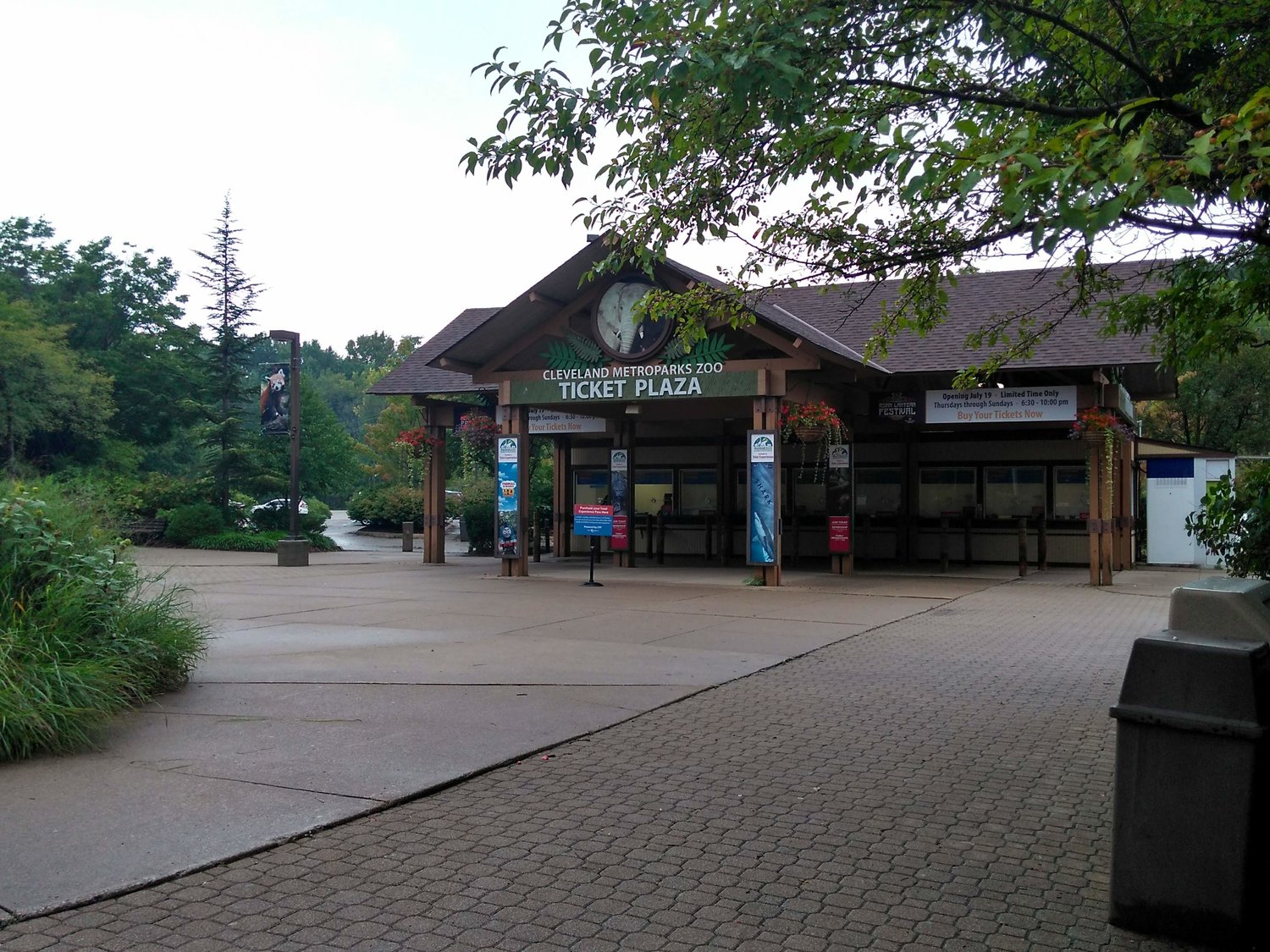
A visit to the Cleveland Zoo begins at the ticket window, where parents and grandparents plunk down a (fairly reasonable) admission fee while their progeny dance around them in excited circles. Crossing through the Main Gate takes visitors past the Exhibit Hall, where information and souvenirs abound. To the right is the Food Court, offering kid-friendly fare like McDonald’s and Dave's Cosmic Subs; to the left is African Elephant Crossing. We always begin our trip to the zoo with the elephants, just like God intended.
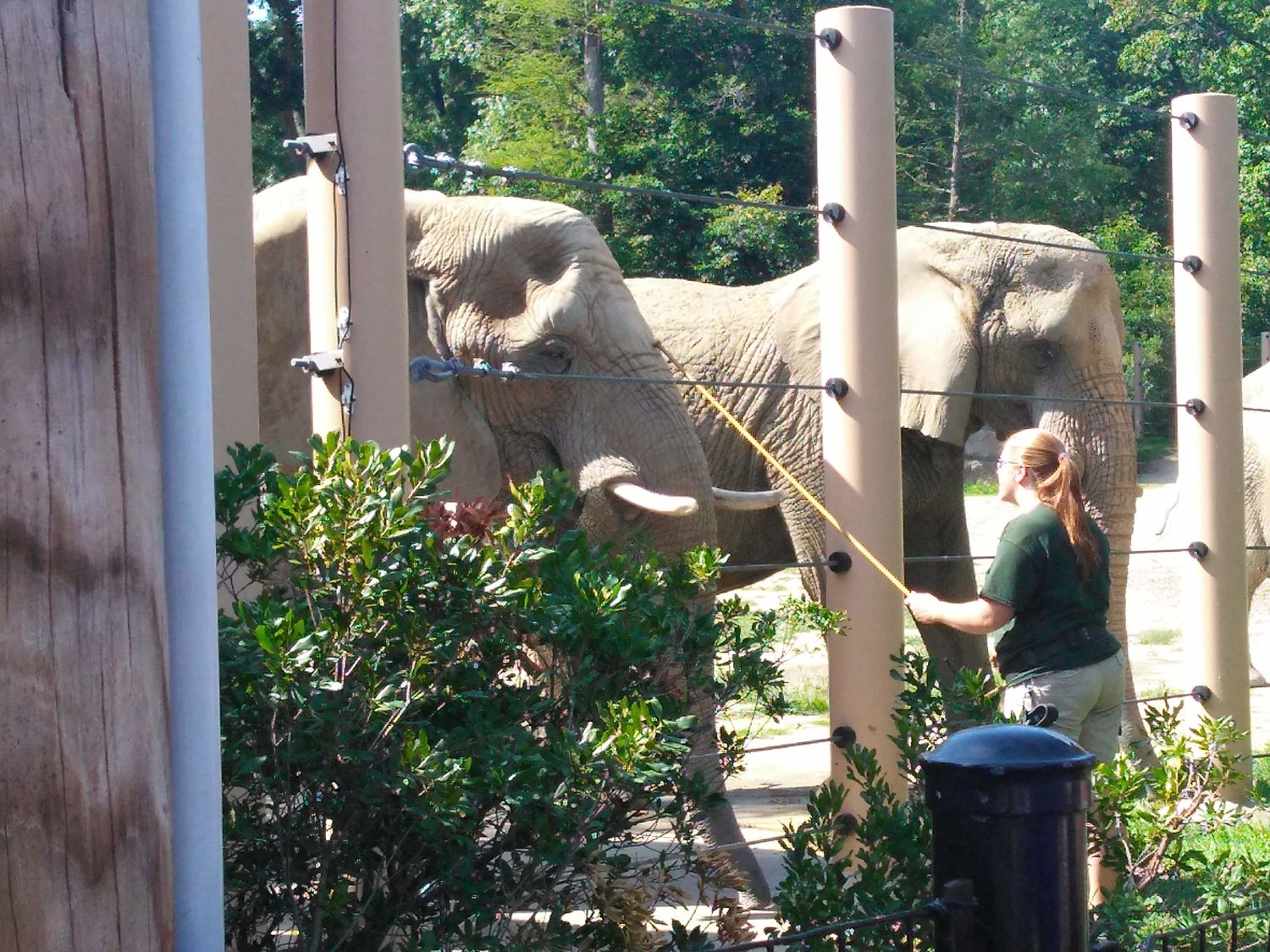
Twice a day the lovely elephant ladies cross from one yard to the other of their five-acre enclosure, which features grasslands, trees, ponds, a heated outdoor area, and large sleeping space. The exhibit can hold up to ten elephants at once, including one male (bull) and eventually young (calves). Watching the four females cross is quite the treat, with each one stepping forward and passing through the gate in turn.
Clearly lavished with love and an attention to detail, African Elephant Crossing is quadruple the size of the first Pachyderm Building (and probably significantly more pricey, at $12.8 million). The whole area features observation and dining decks, a kgotla (goat-la, a southern-African meeting place), the elephant's indoor quarters, plus additional African wildlife.
Below, left to right: Elephant Crossing Plazza (building with indoor living quarters is in the center); meerkats; elephant observation and picnic space; indoor quarters; informative wall in indoor quarters.
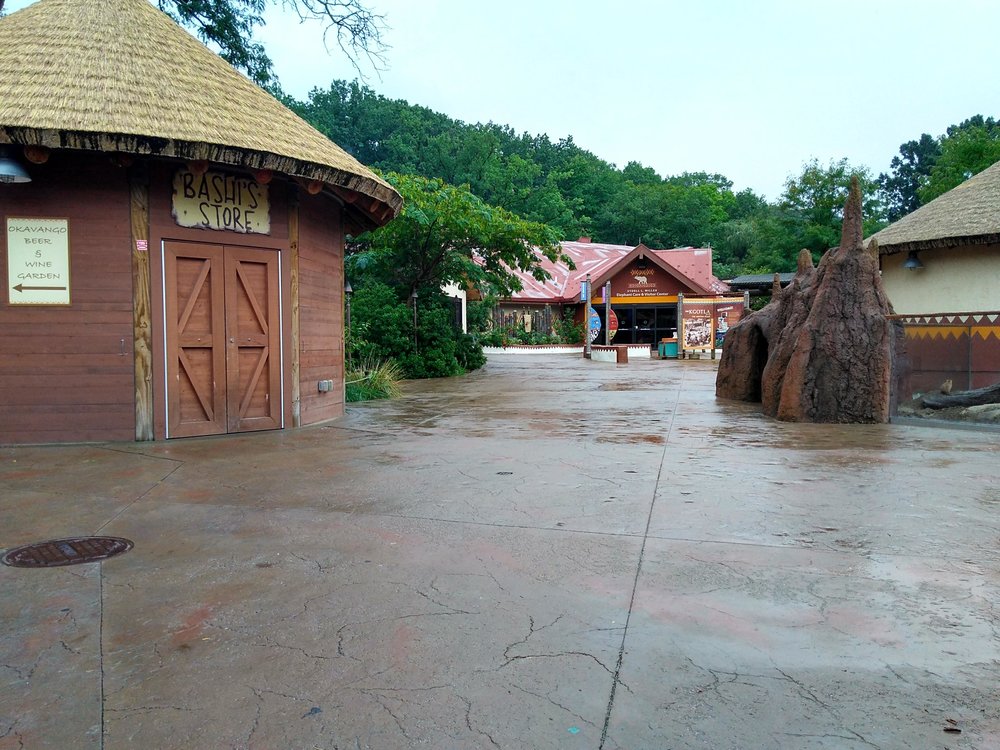
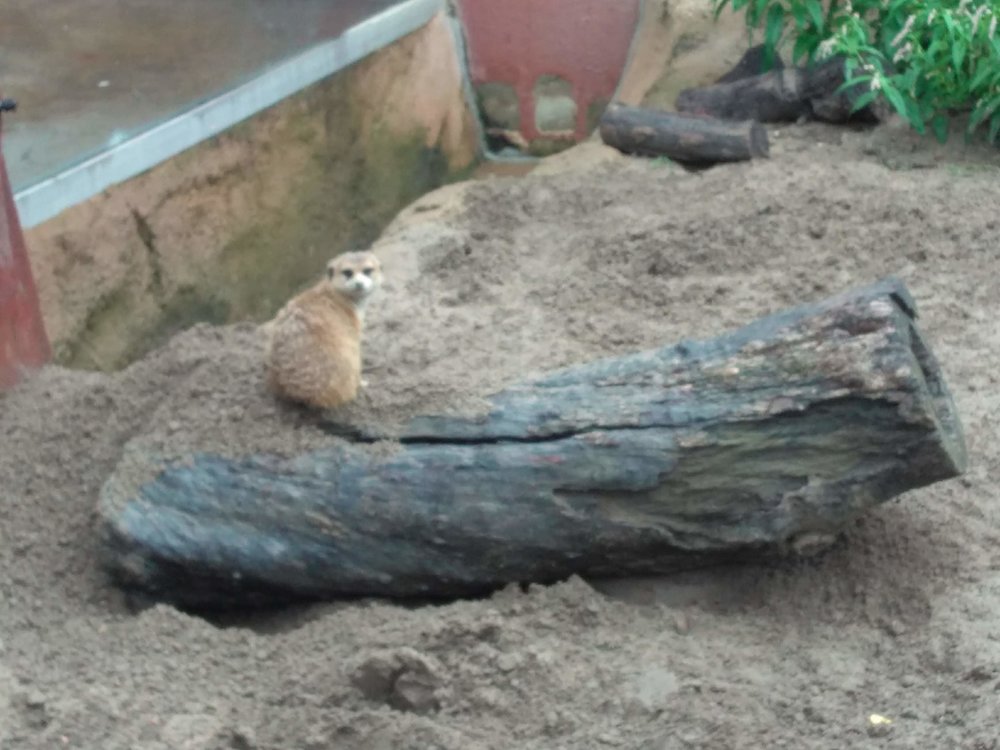
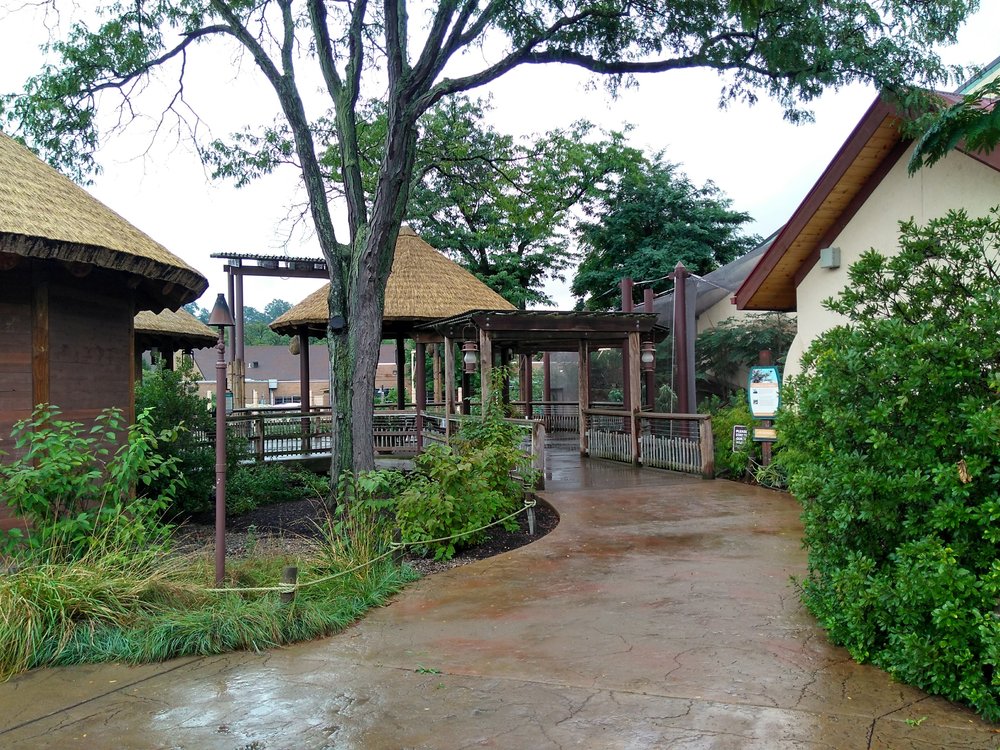
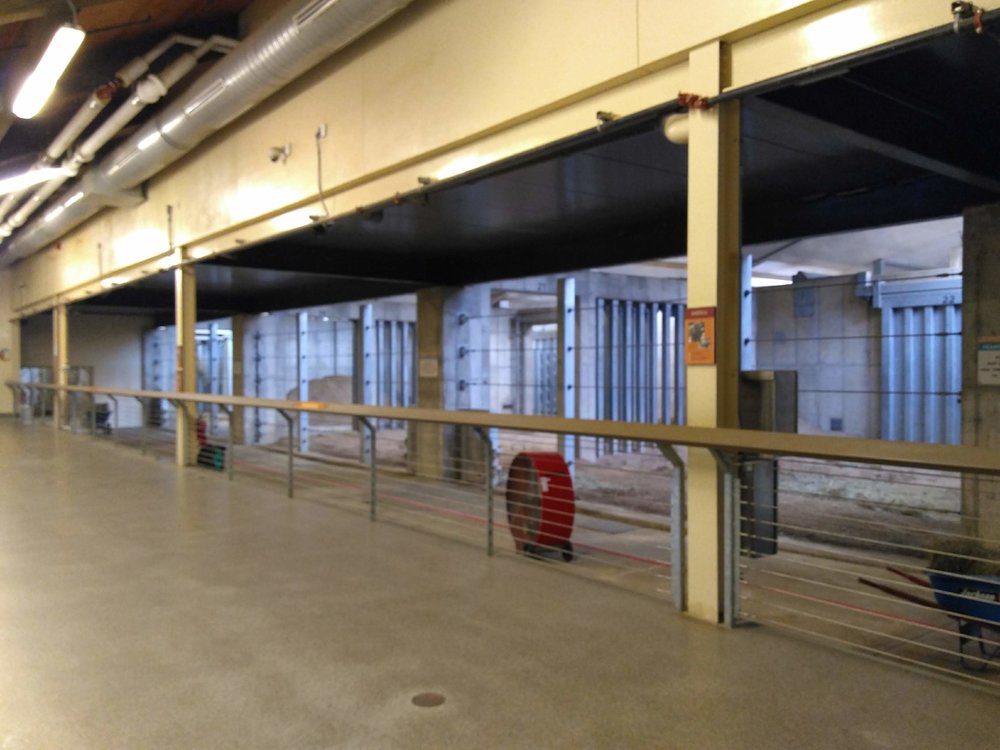
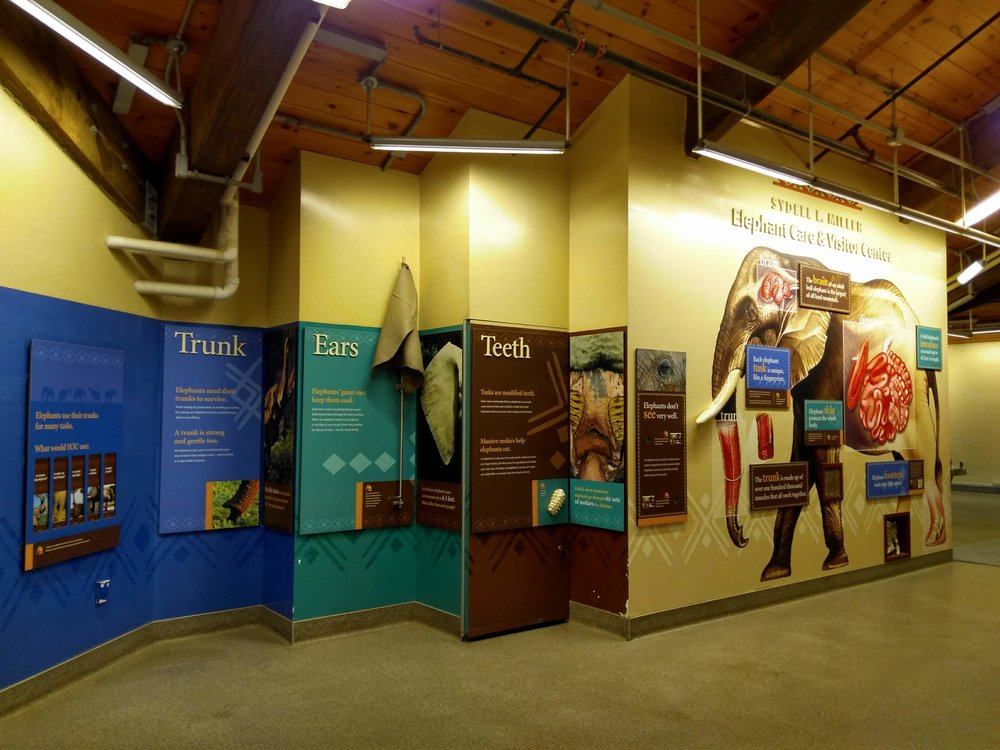
If we continue on from the African Elephant Crossing in a clockwise fashion, making sure to peer through the shrubbery/fencing into one of the Crossing yards, the Australian Adventure is next. Probably the most little kid-friendly of all the Zoo’s offerings, Australian Adventure features a train ride (at additional cost) and all of our favorite friends Down Under: Koala Junction, Wallaby Walkabout, and Lorikeet Lane. The latter are always a favorite, as visitors enter into the enclosure and are permitted to view the birds up close- sweet treats are available for those who wish to feed the brightly feathered flyers.
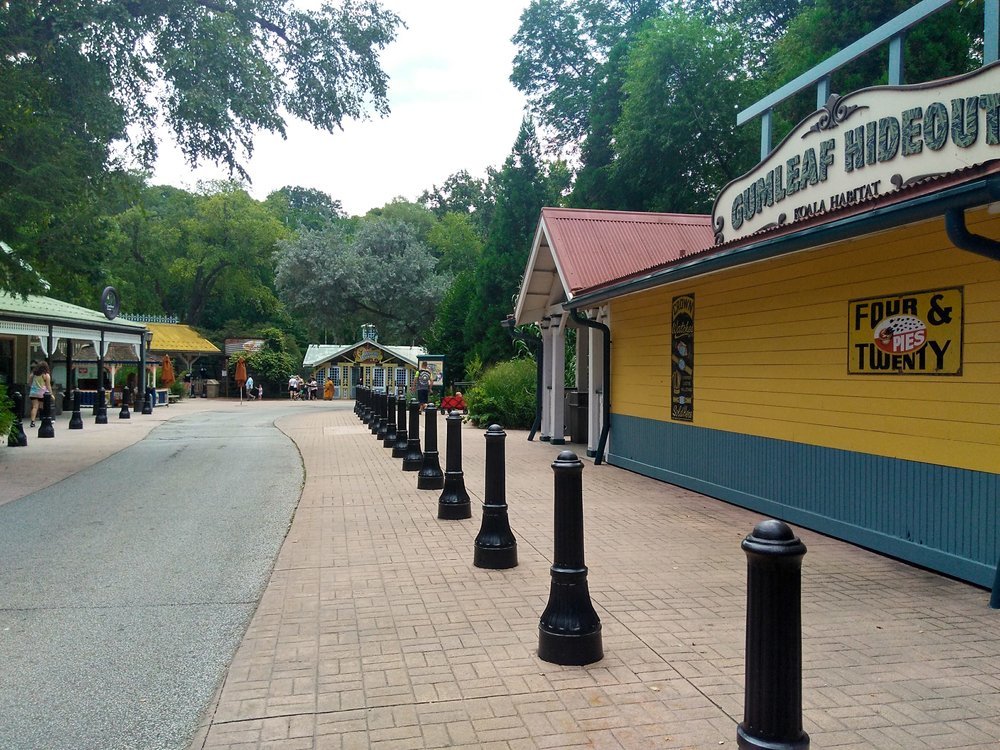
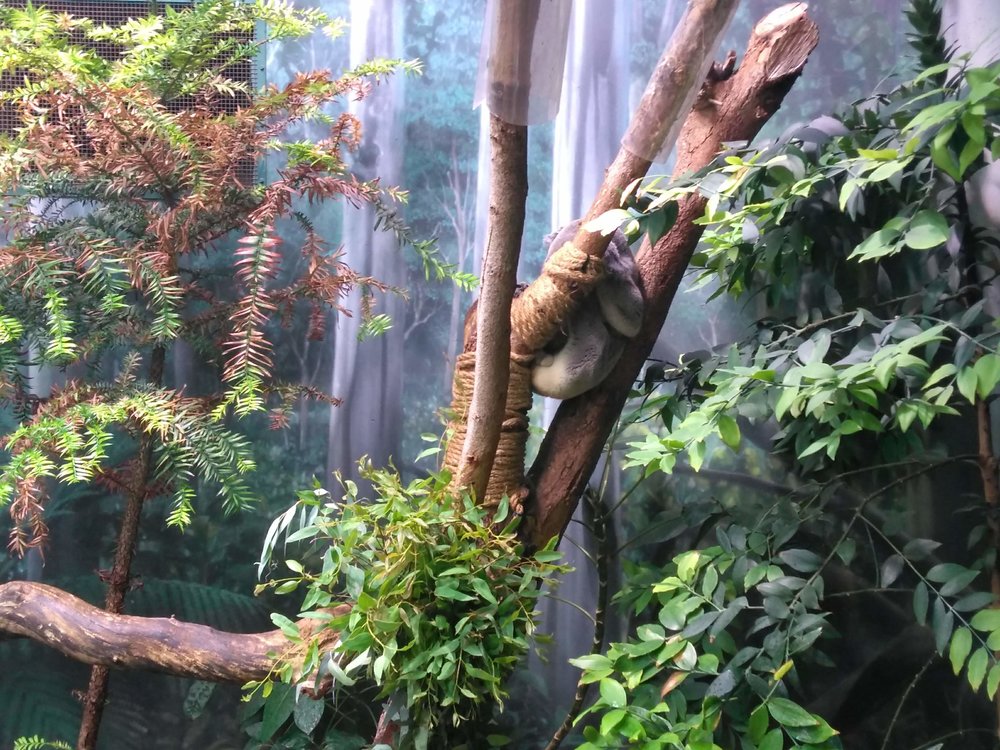
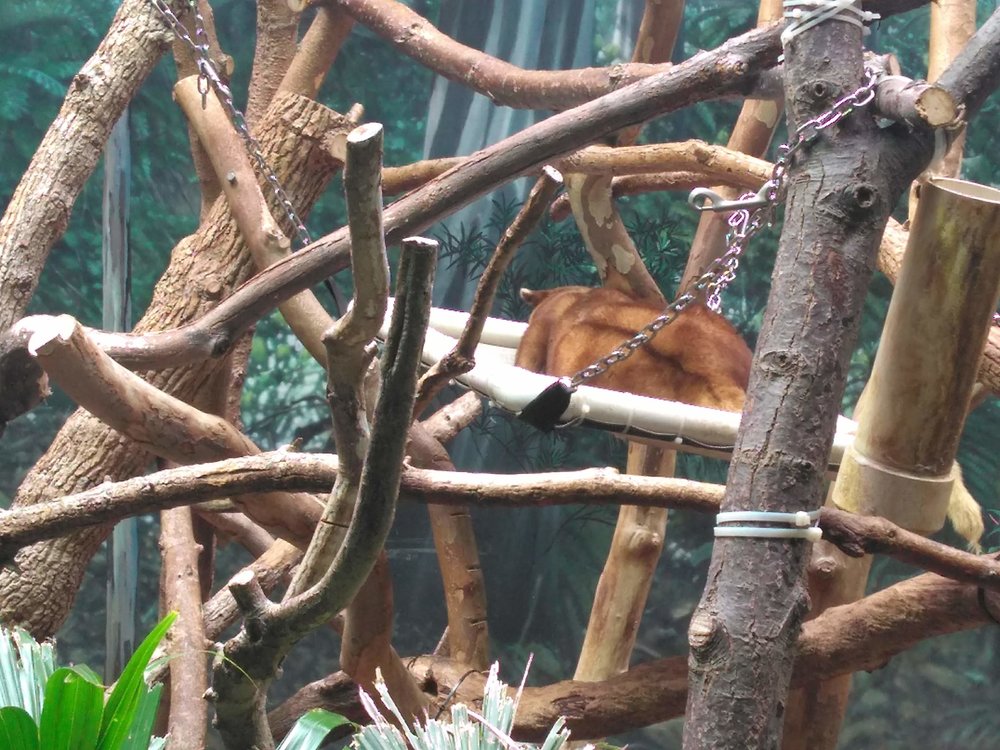
Fun Fact: Walt Disney visited the Cleveland Zoo in August 1961, where he saw the old Children's Farm, now occupied by the Australian Adventure, and rode the train.
Below: Offerings from Australian Adventure. Left to Right: two female wallaroos and one male (center); the Reinberger Homestead offers a glimpse into Australian home life; Reinberger interior; Reinberger kitchen; the Yagga Tree, with it's snake slide and educational exhibits.
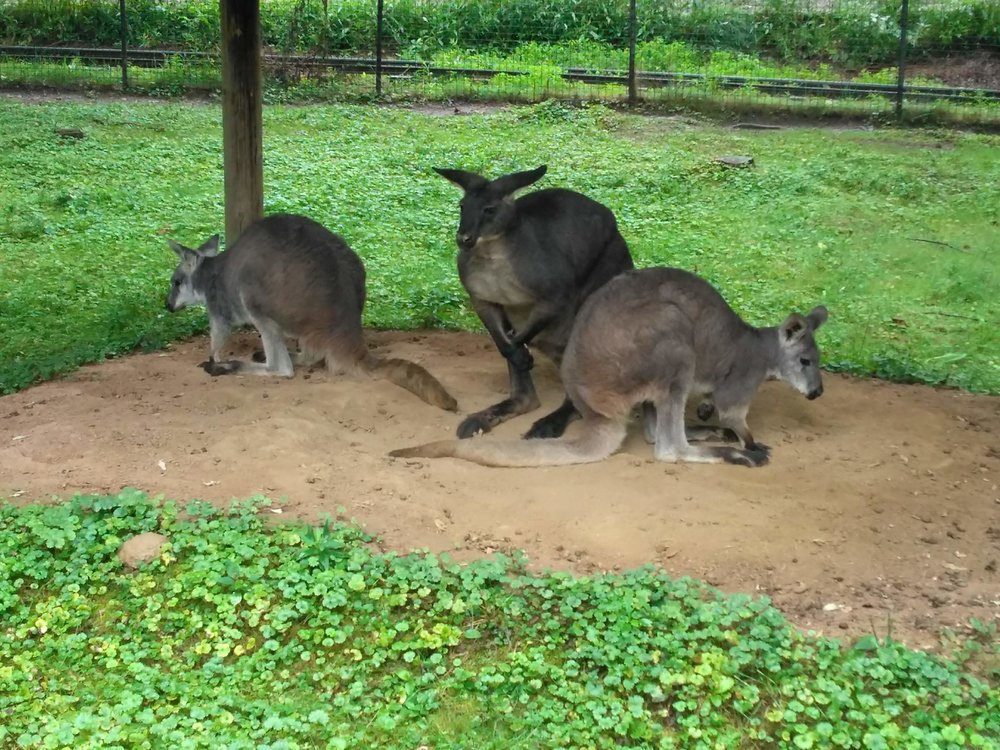

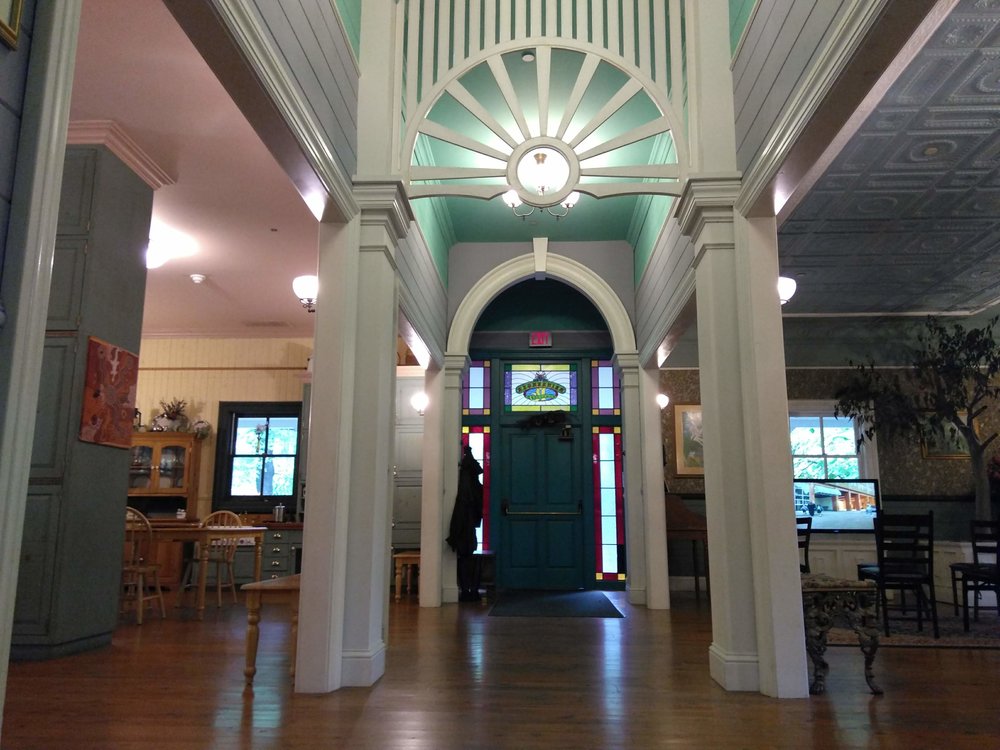
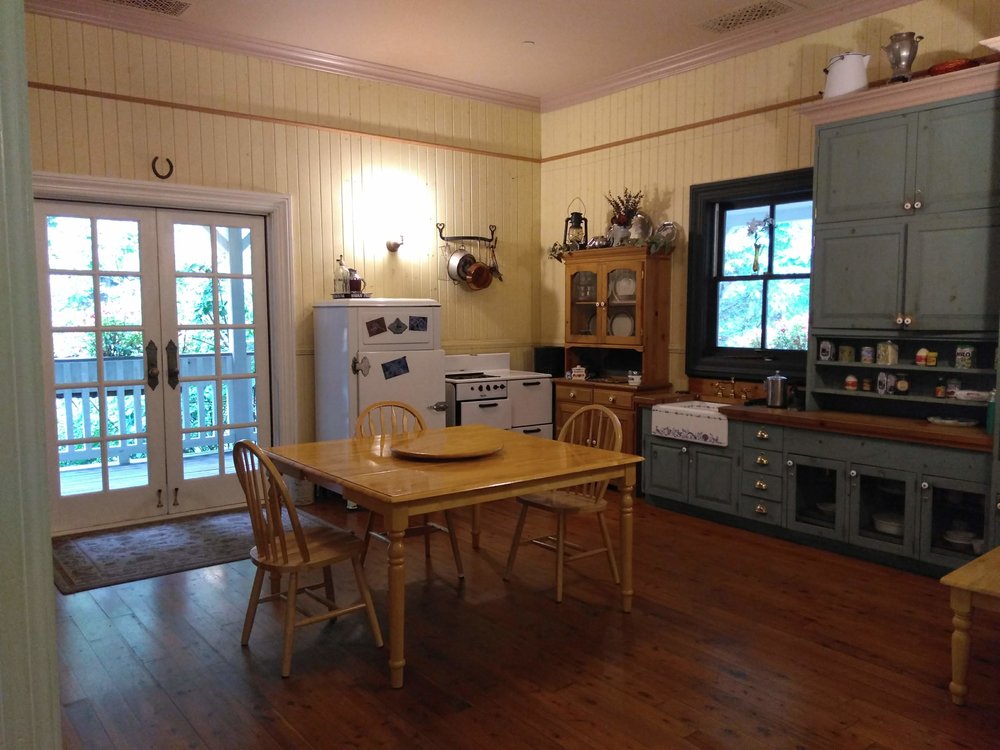
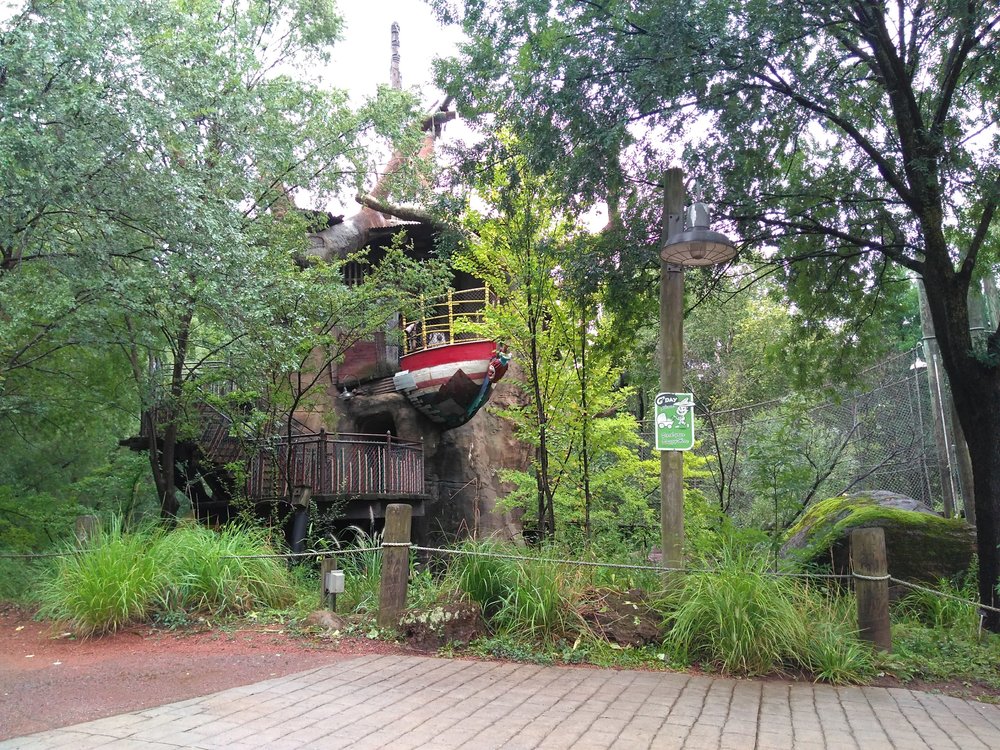
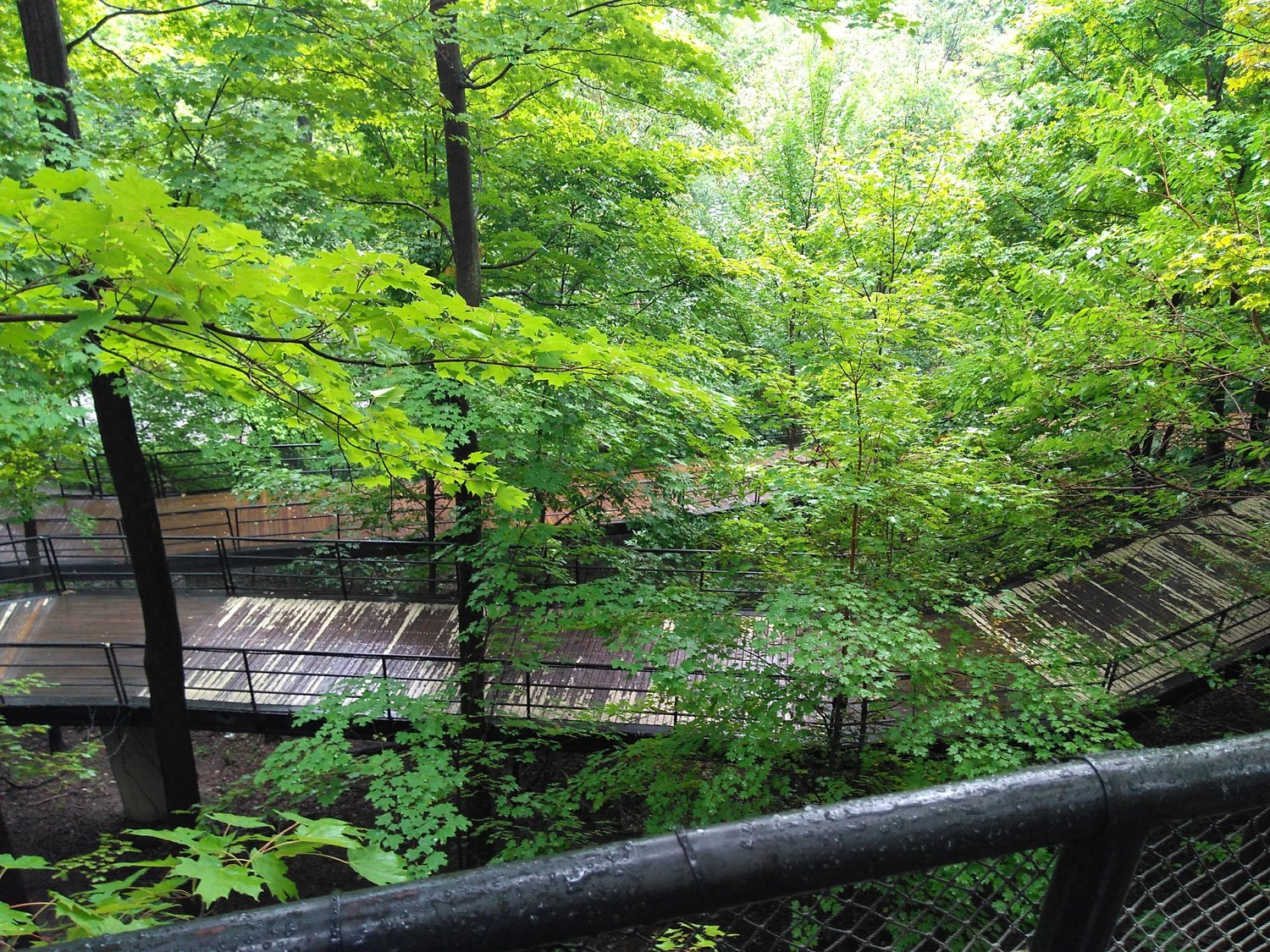
If you are strong of heart and sturdily shod, hiking up the 1,250-foot (76.2 meters) Deckwalk to the Primate, Cat, & Aquatics building might be right for you, while all others are welcome to take the shuttle service. Split into two parts, the building hosts Aquatics to the onlooker’s left, Primates and Cats to the right. There are also cats located outdoors (in the summer, at least), most prominently the cheetahs.
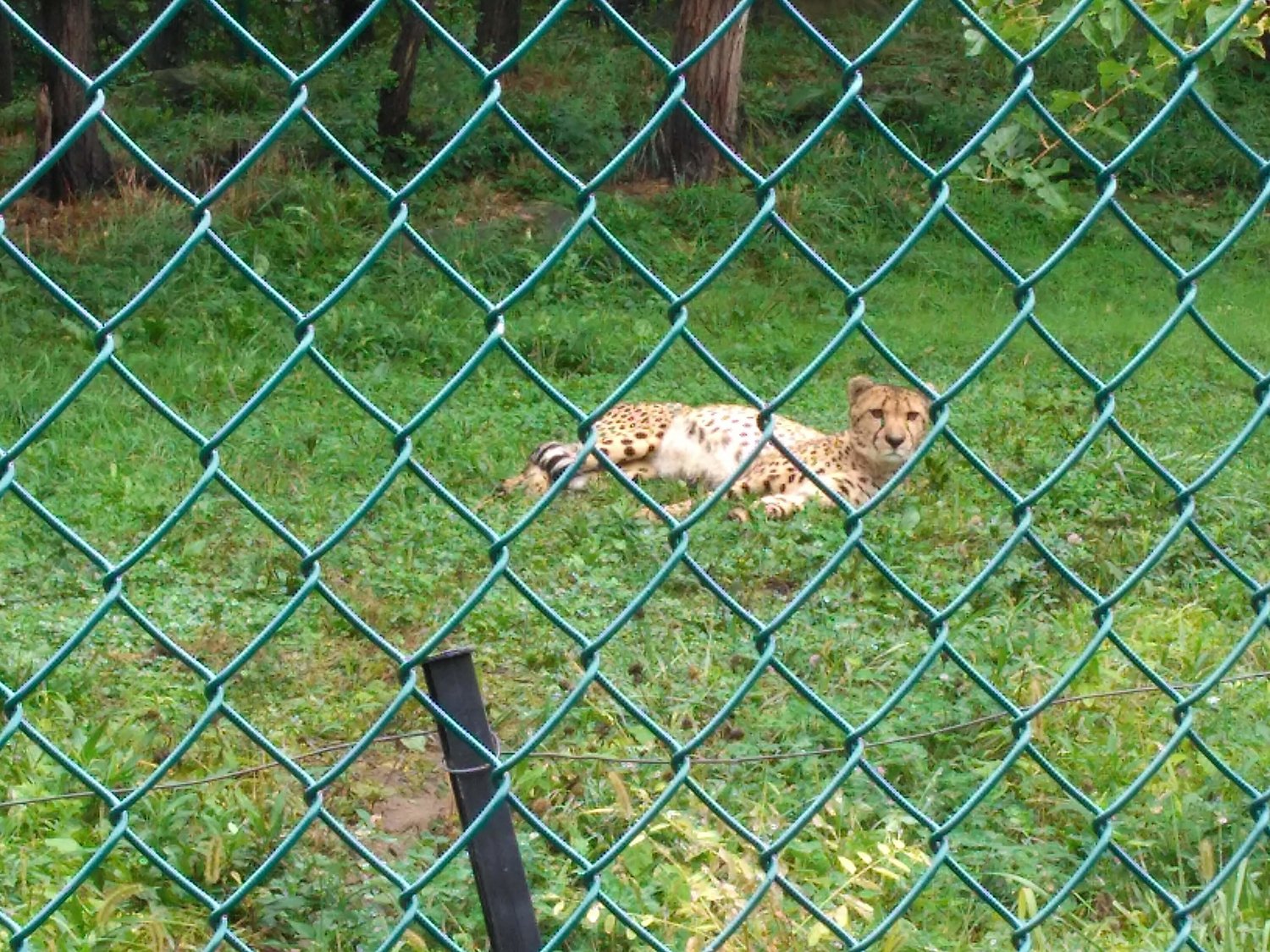
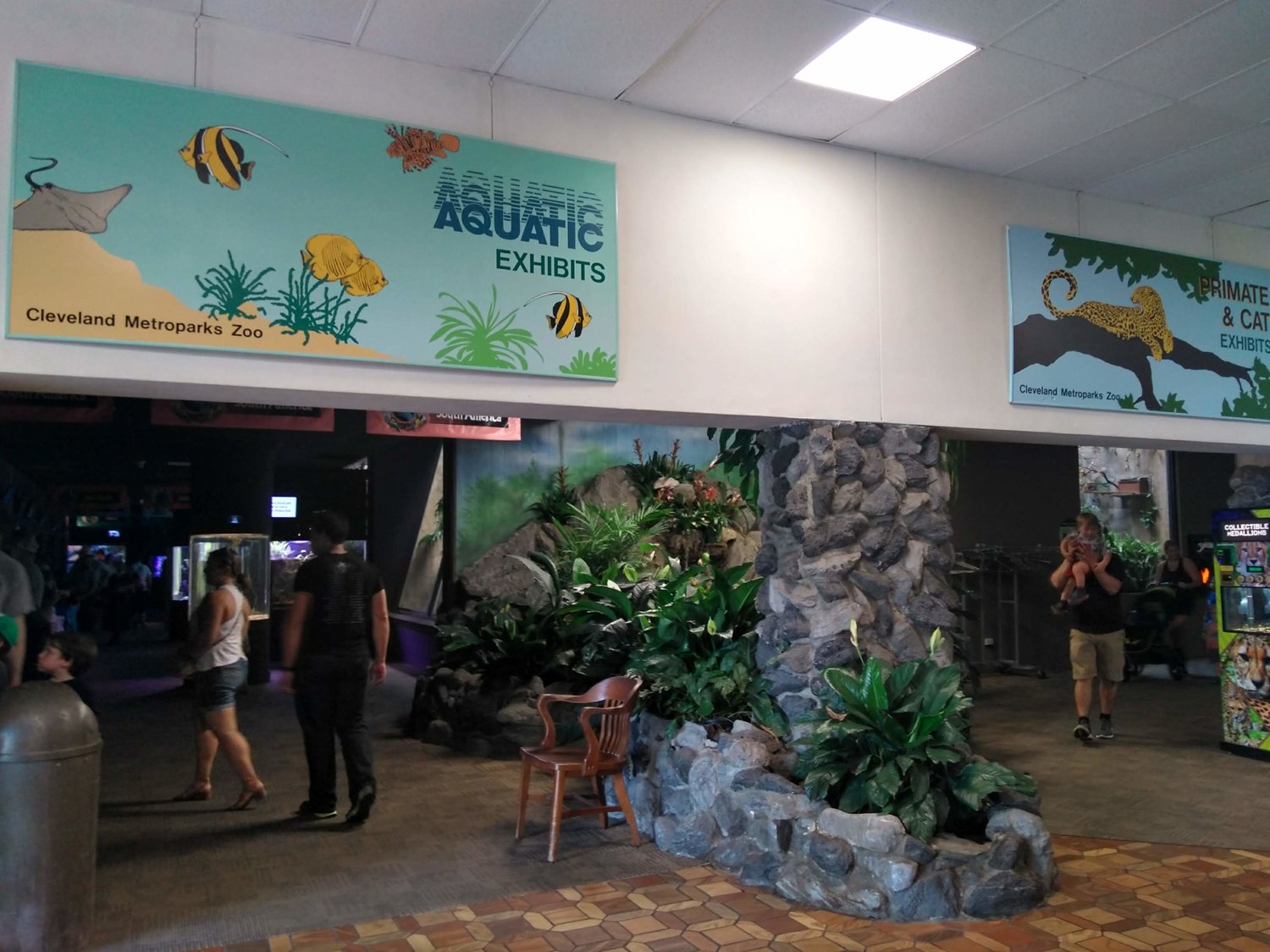
The aquarium dwellers vary from local lake and river specimens to the colorful residents of tropical oceans, while the primates and felines take visitors on a continent-hopping journey from South America to Africa and Madagascar.
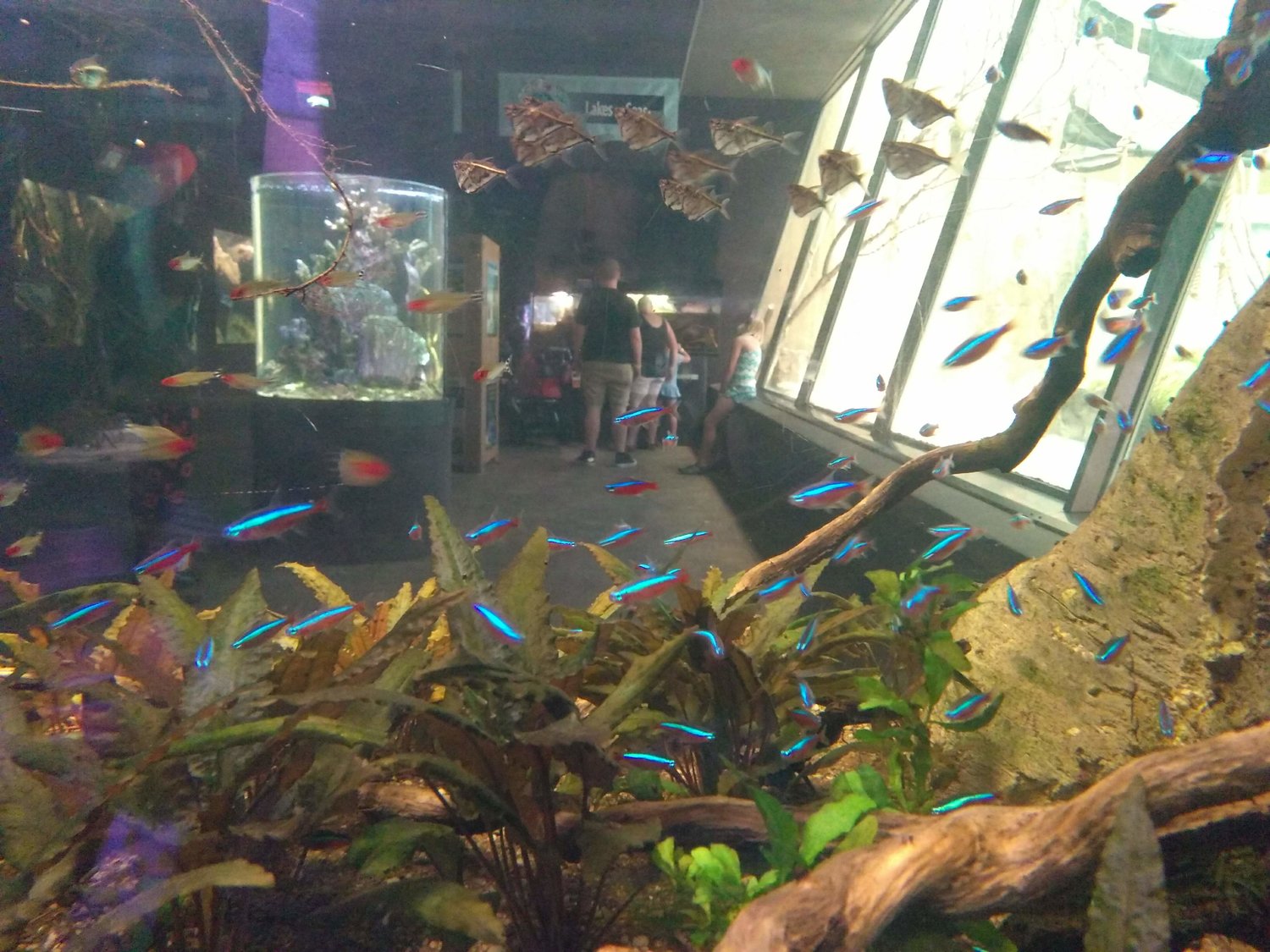
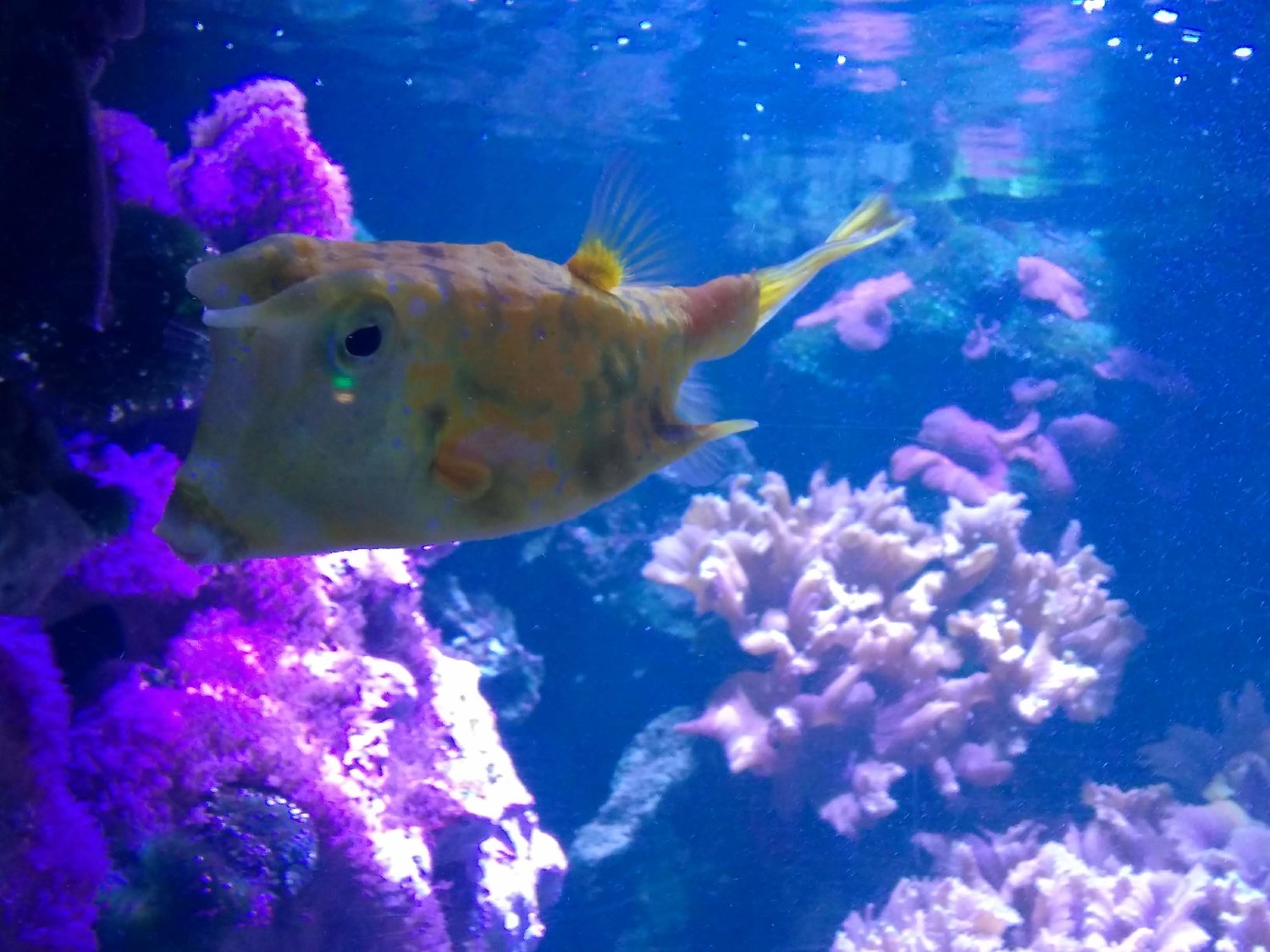
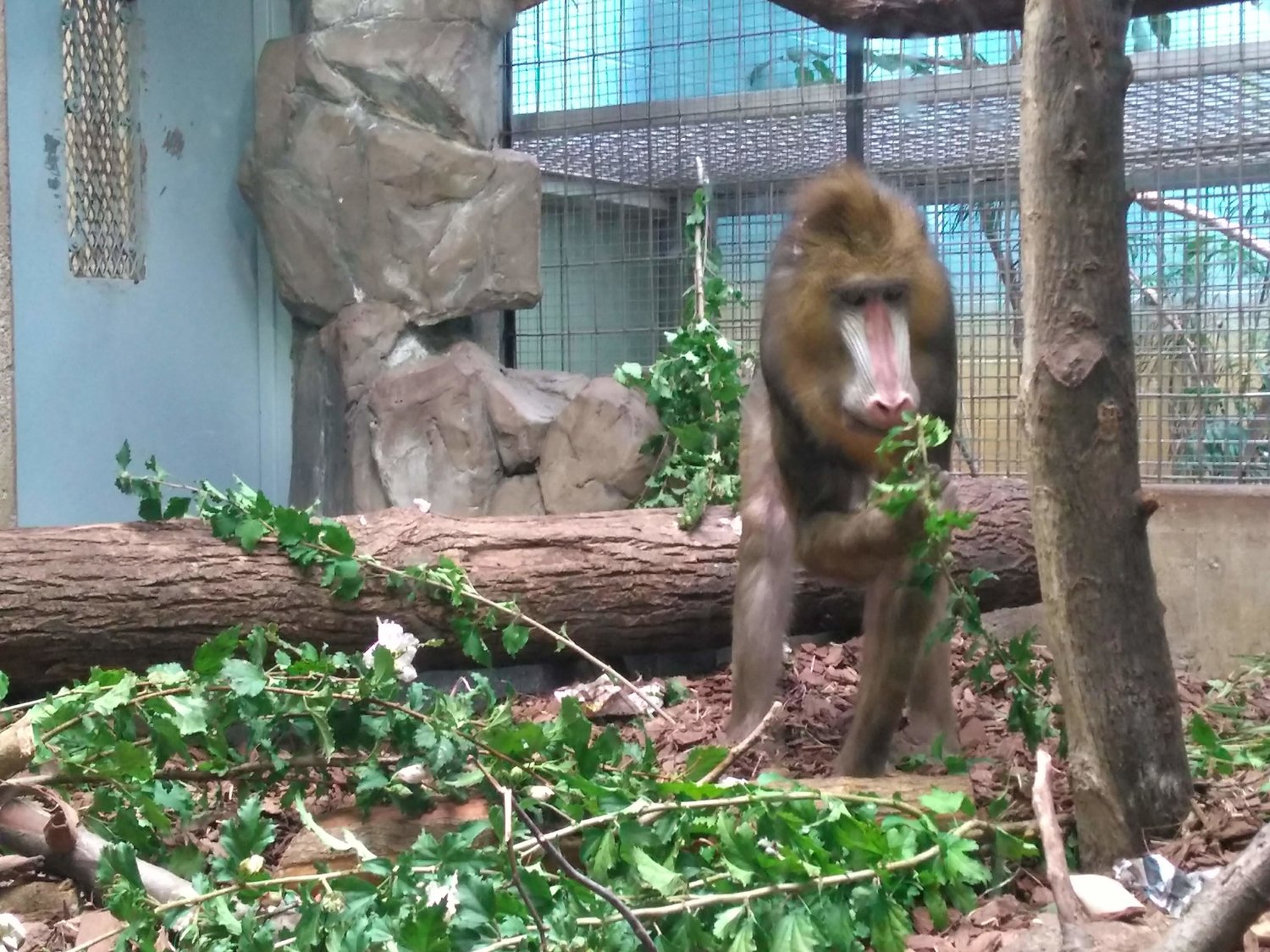
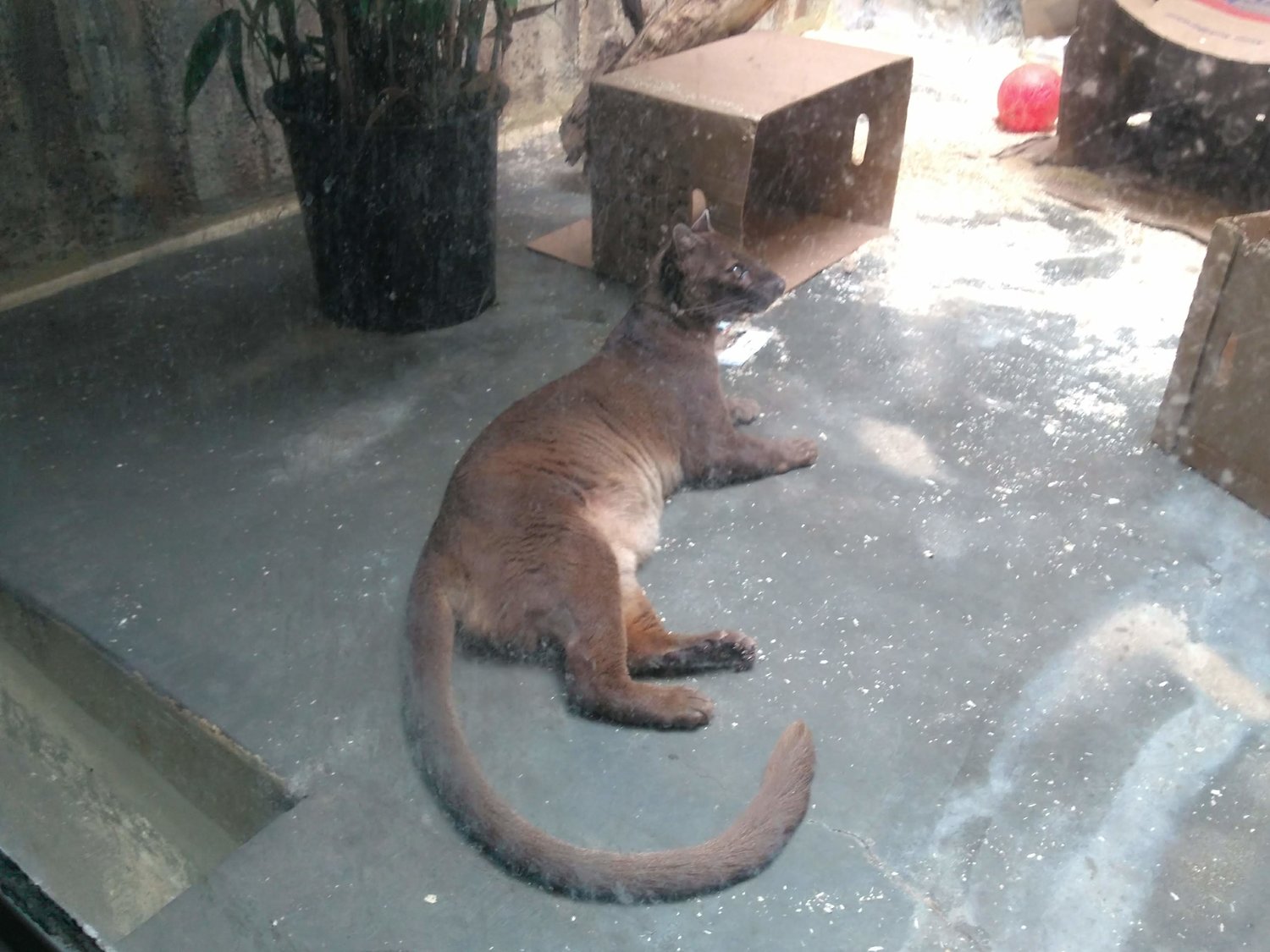
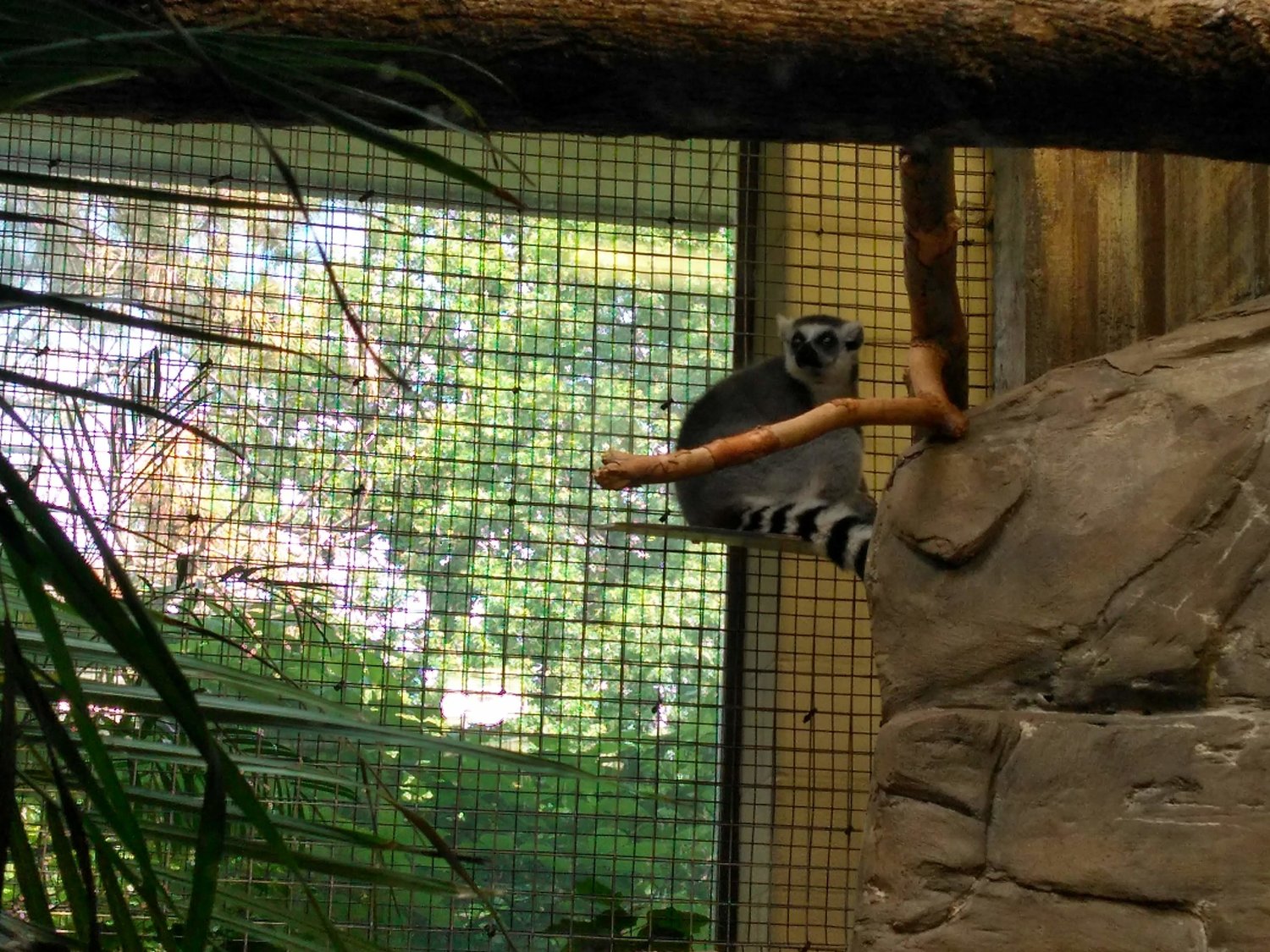
Back down the Deckwalk (a considerably easier task) and on through the Circle of Wildlife and Waterfowl Lake, visitors experience raptors and waterfowl, as well as a play area for the kiddos and a carousel for everyone with a ticket (available at additional cost). Here we also find Wade Memorial Hall on the lake shore, facing the 4-D Theater and Ben Gogolick Giraffe Encounter. Being back in the relative center of the zoo, now is a good time to pop over to the Food Court for lunch or an ice cream snack. After munching on your menu of choice wander over to the lion exhibit, located right next to the umbrella-covered picnic tables. The deep trenches and partitioned observation area ensure the snacking will be a one-sided affair.
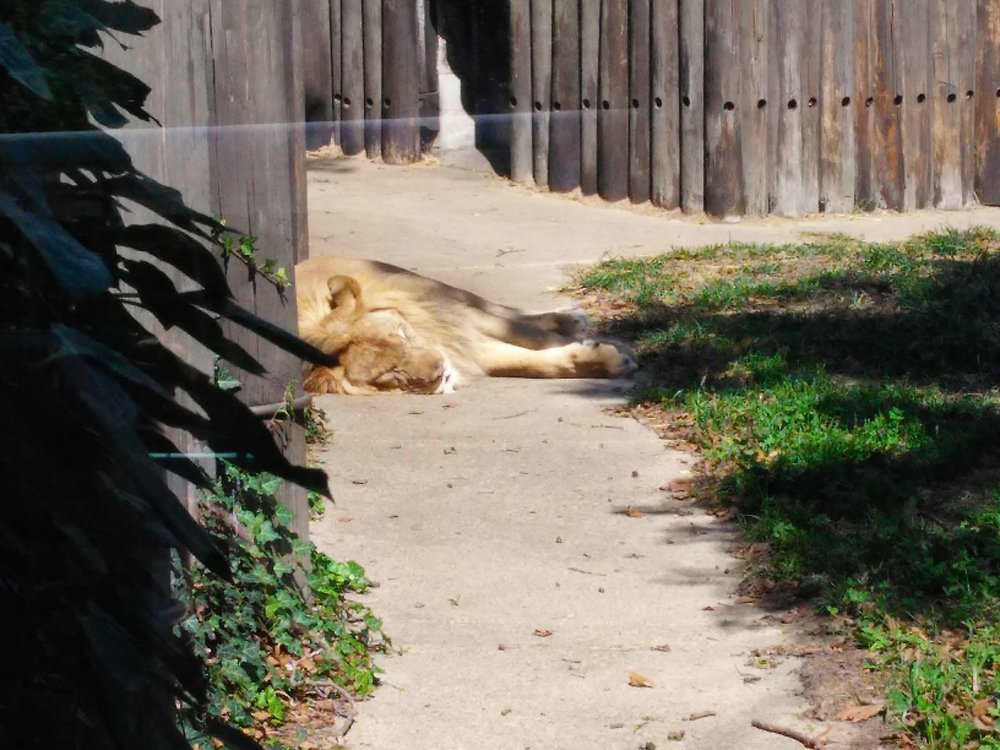
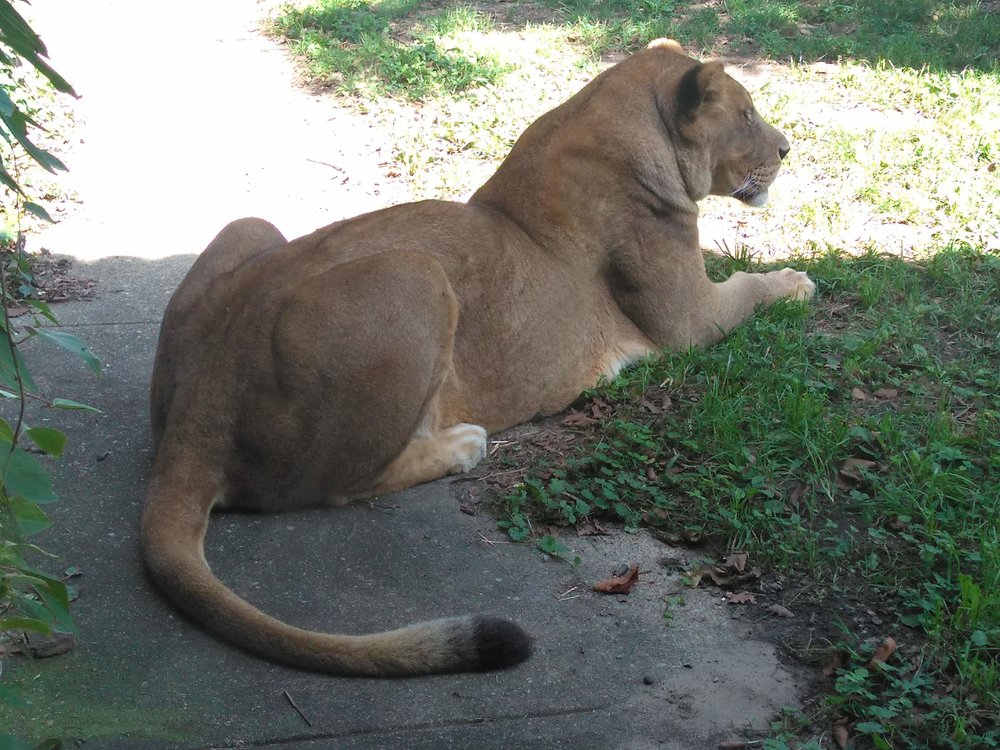
Mutually acceptable snacking can be had at the other end of the African Savannah, at the Ben Gogolick Giraffe Encounter. I adore giraffes, and the opportunity to feed one was too great to pass up. In a way they remind me of cows (which I also love), watching with big, patient yet expectant eyes fringed by long, delicate eyelashes. You’re told to approach the giraffe, who looks like a floating head, perched on top of that protracted neck, and offer a deep green leaf of lettuce for her perusal, without touching her. And then! - she extends that great blue tongue of hers, wrapping it around the leaf, and whisks it into her mouth! It’s a remarkable experience, for both young and old alike.
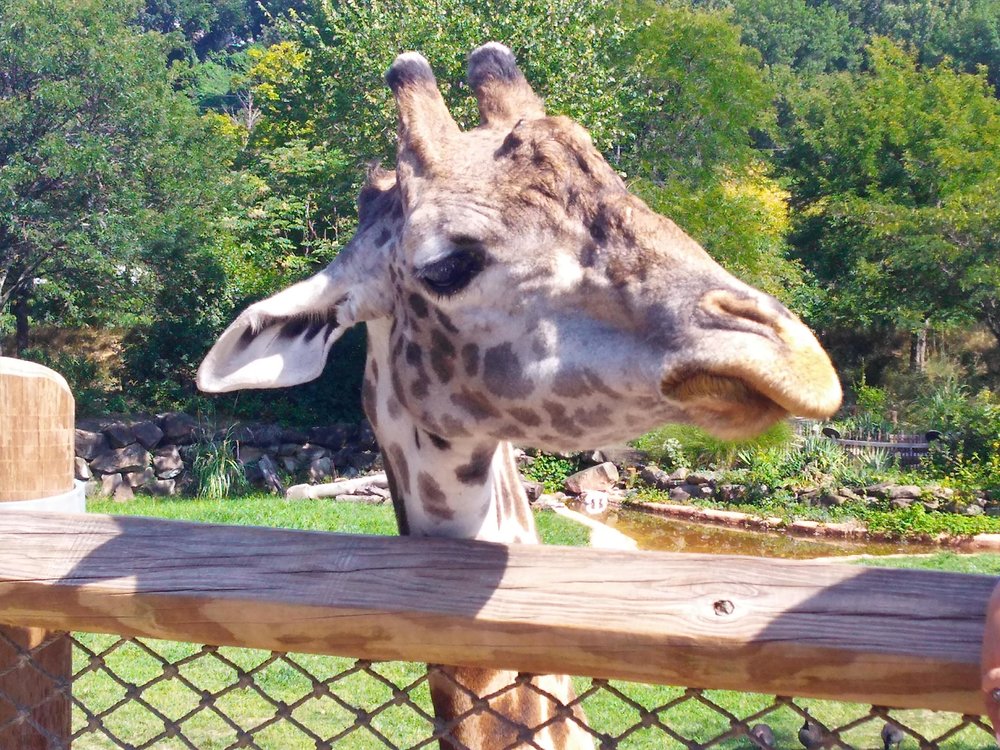
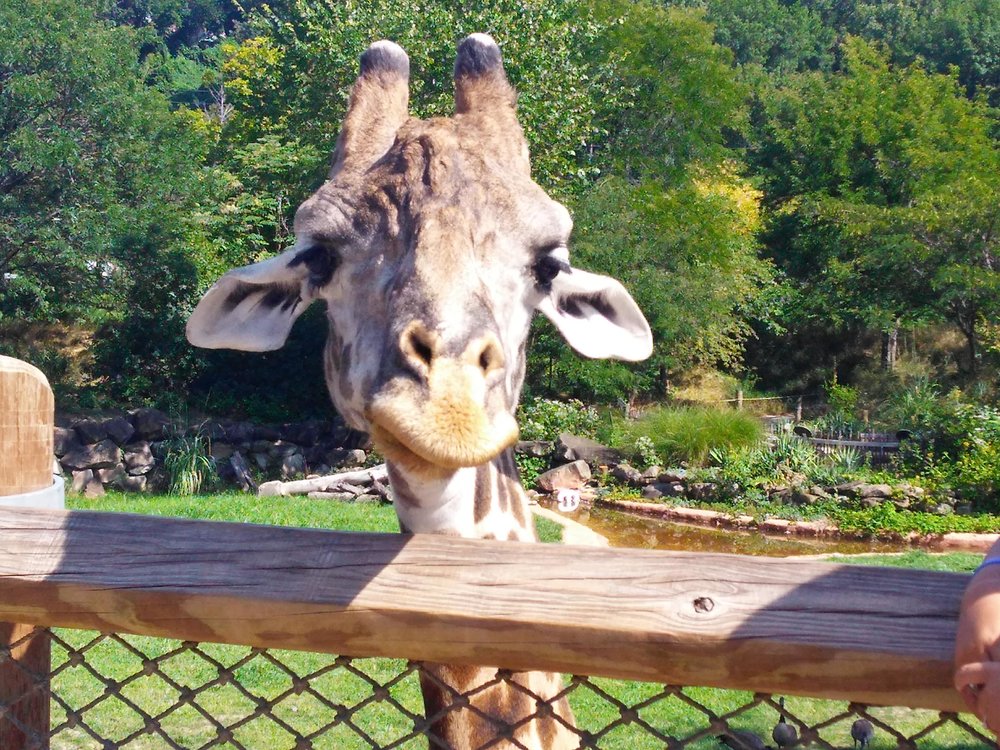
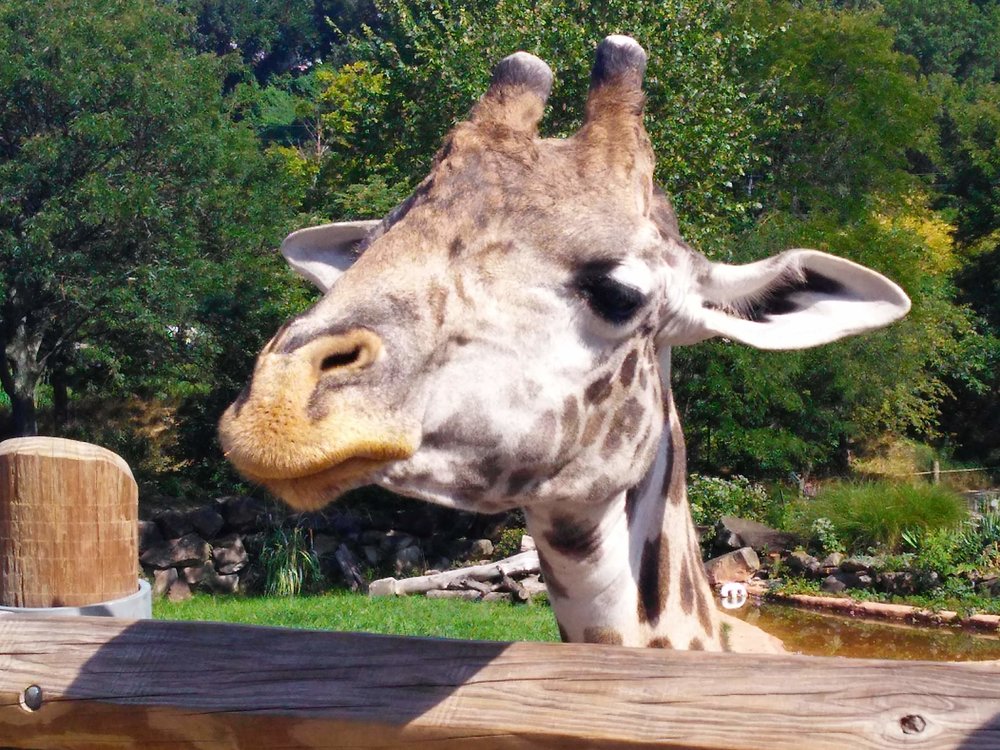
After the Giraffe Encounter/Best Thing Ever we have the option of continuing around the African Savannah, or heading up into the Wilderness Trek. I personally prefer the second option, going up and around the Trek and then down and out through the remainder of the Savannah.
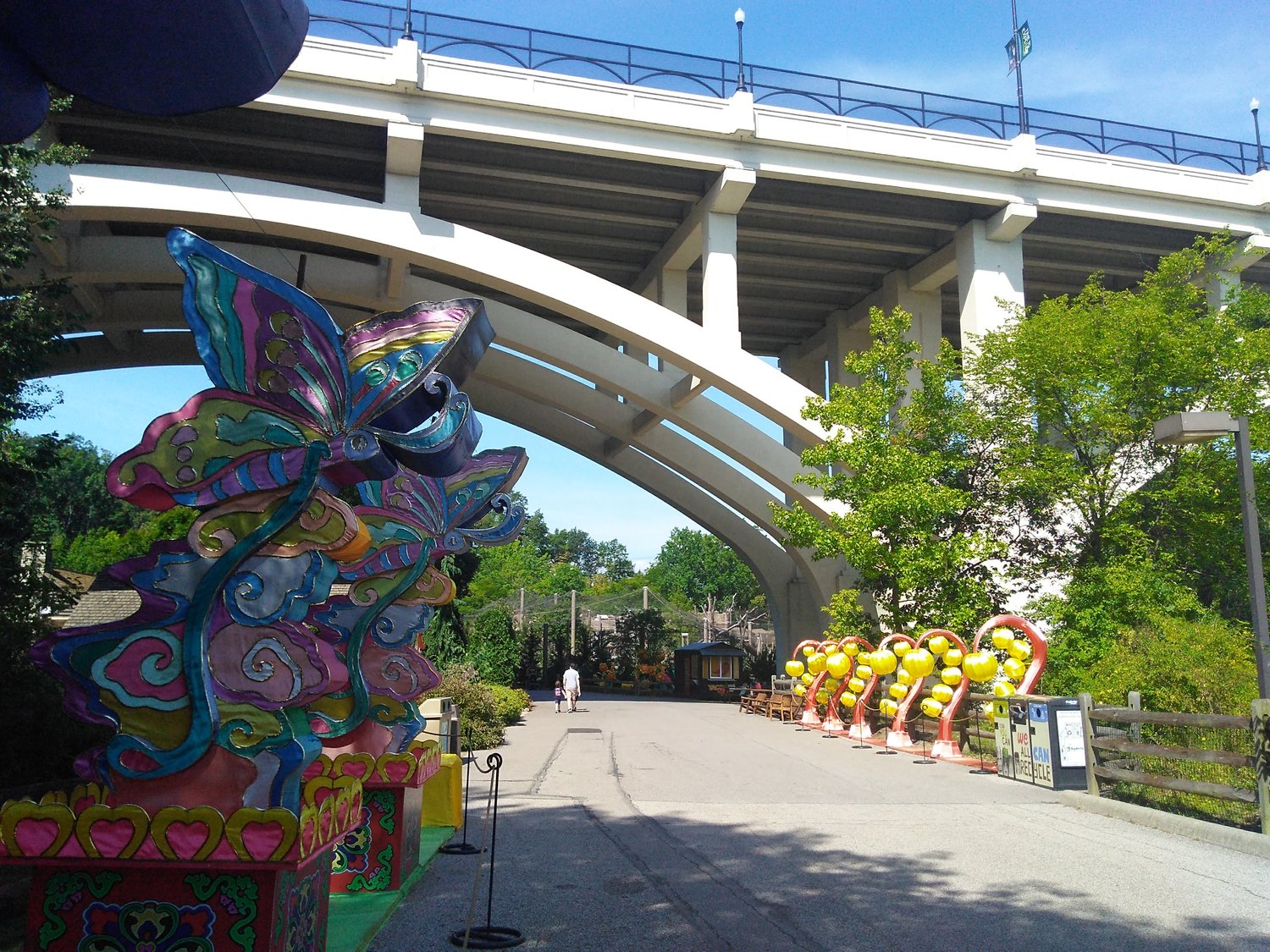
Like the Primate, Cat & Aquatics building, the Wilderness Trek is located away from the central zoo area, though this particular hike requires considerably less physical exertion as the incline isn't quite as steep. Passing under the industrial elegant (a term I just made up) Fulton Road Bridge reveals the Wolf Lodge to the left, a 3,000-square-foot rendition of a (very large) nineteenth-century trapper's cabin. Built in 1997, the Lodge acts as the exhibit's orientation center, educating visitors about native wildlife once found in Ohio.
Left to right: The Wolf Lodge; bronze statue outside the Wolf Lodge was created by Mary Wawrythko, a Bowling Green State University alum; Lodge interior; rear observation area's back wall is glass, allowing visitors to view the zoo's Mexican Grey Wolf pack in as natural a setting as possible; beavers swim in the water.
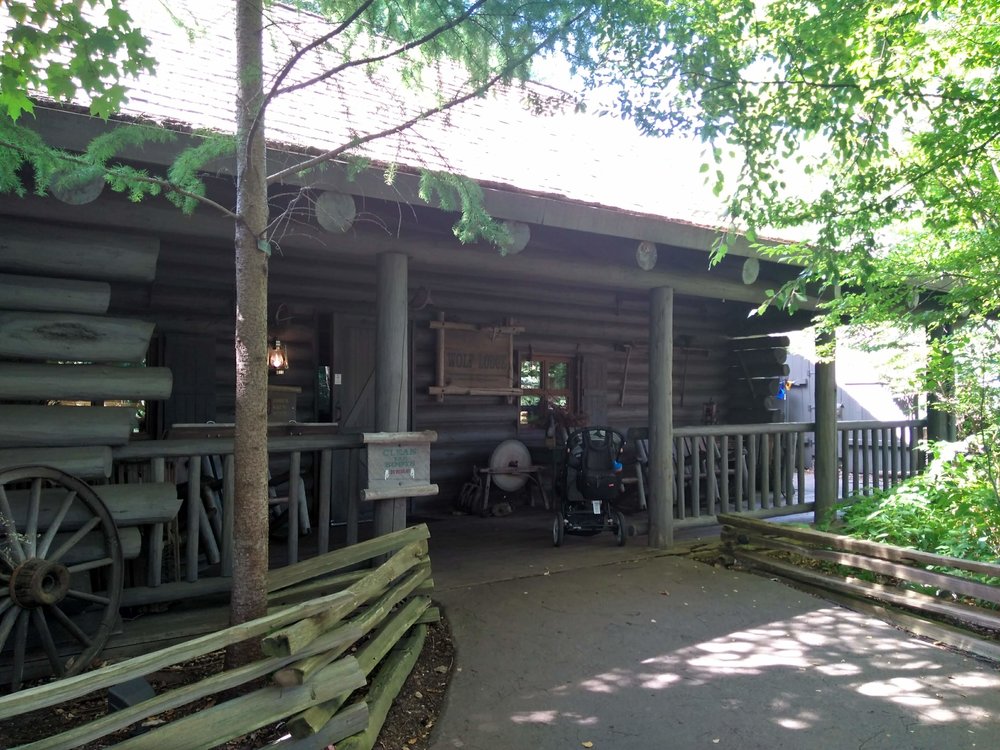
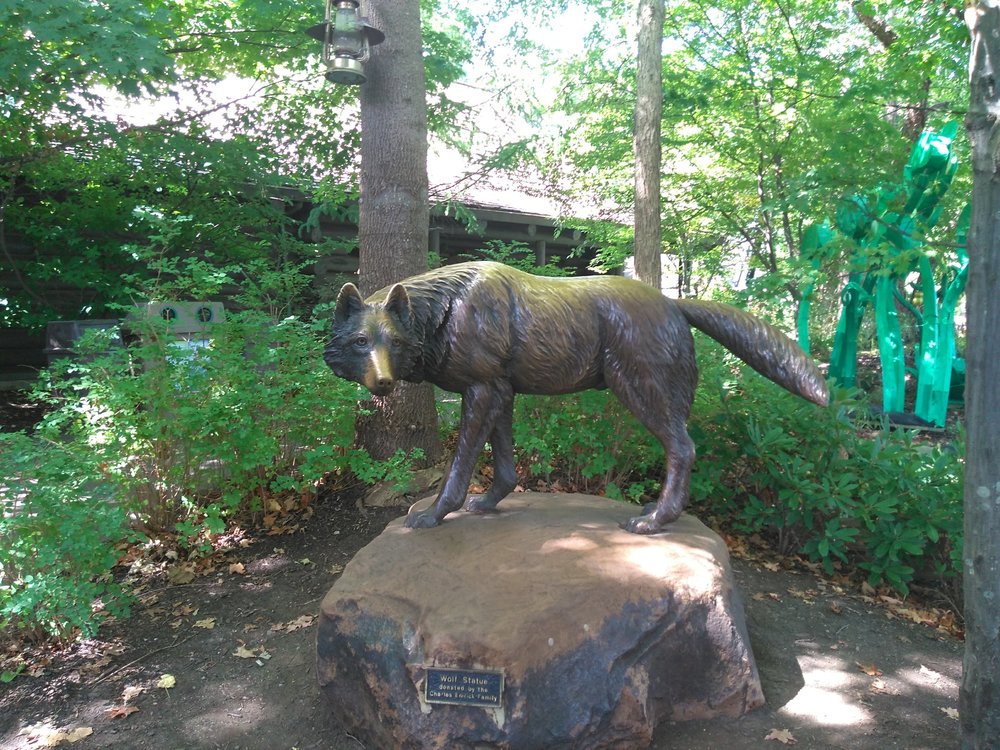
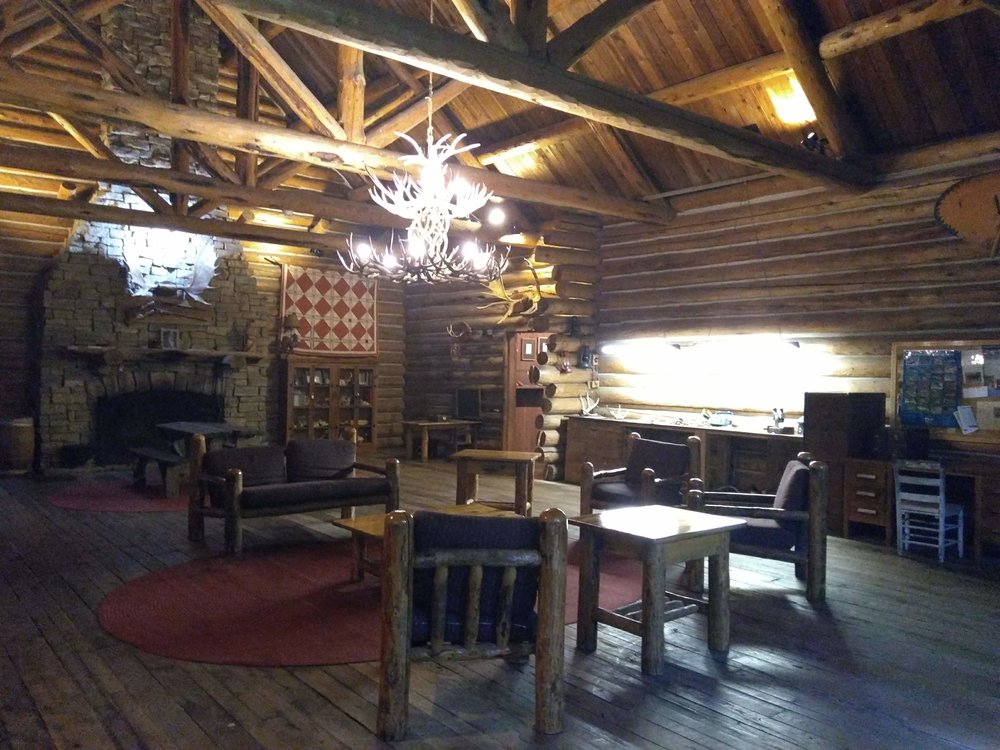
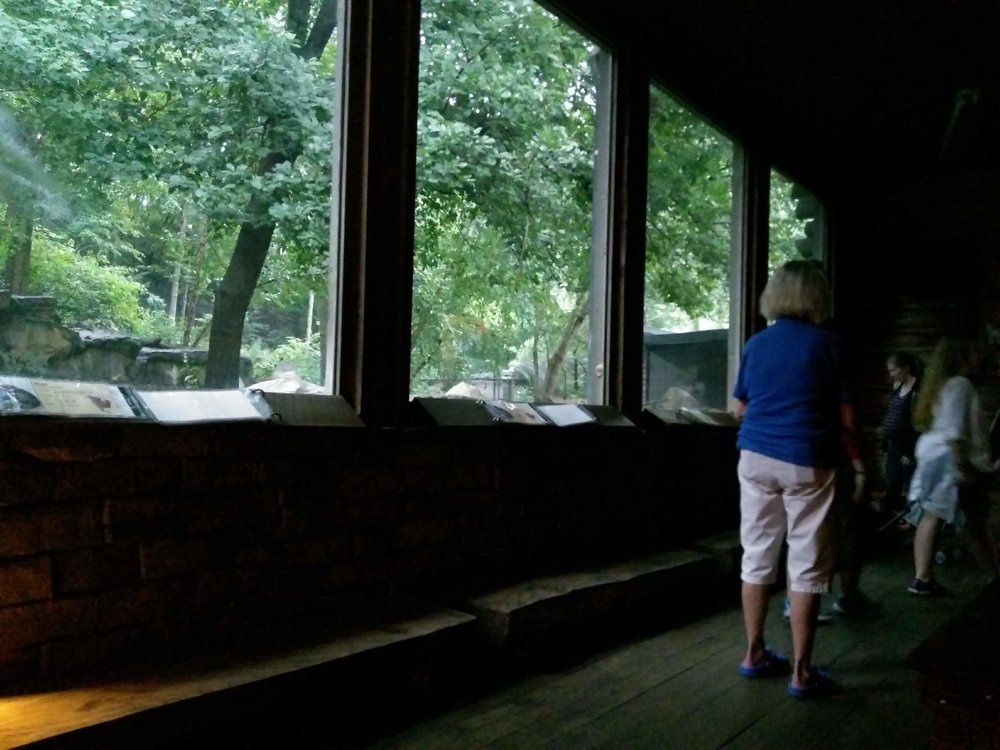
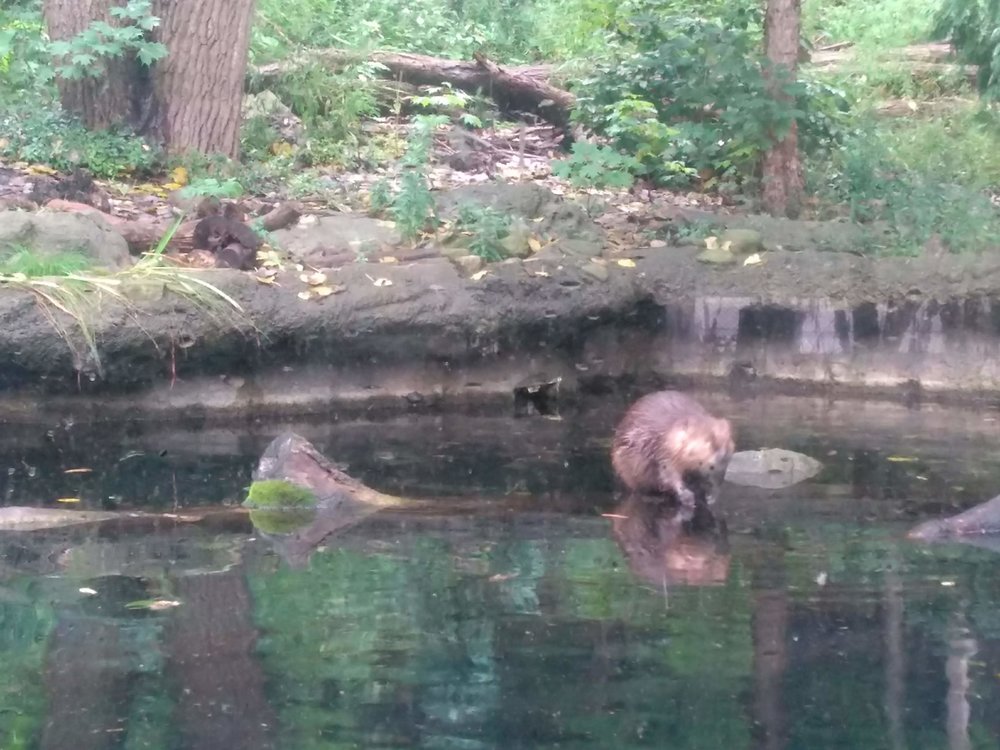
Circling clockwise through Wilderness Trek leads us past the reindeer and the rotating bear habitat (we saw the sloth bear), on to the newest jewel in the zoo’s crown, Asian Highlands. The 1.3-acre exhibit is shiny yet serene, and looks every penny of its $5.8 million budget: colorful flags fluttering over open courtyards, gently curving roof-lines, and round moon gates, with delicate Asian-inspired music floating throughout.
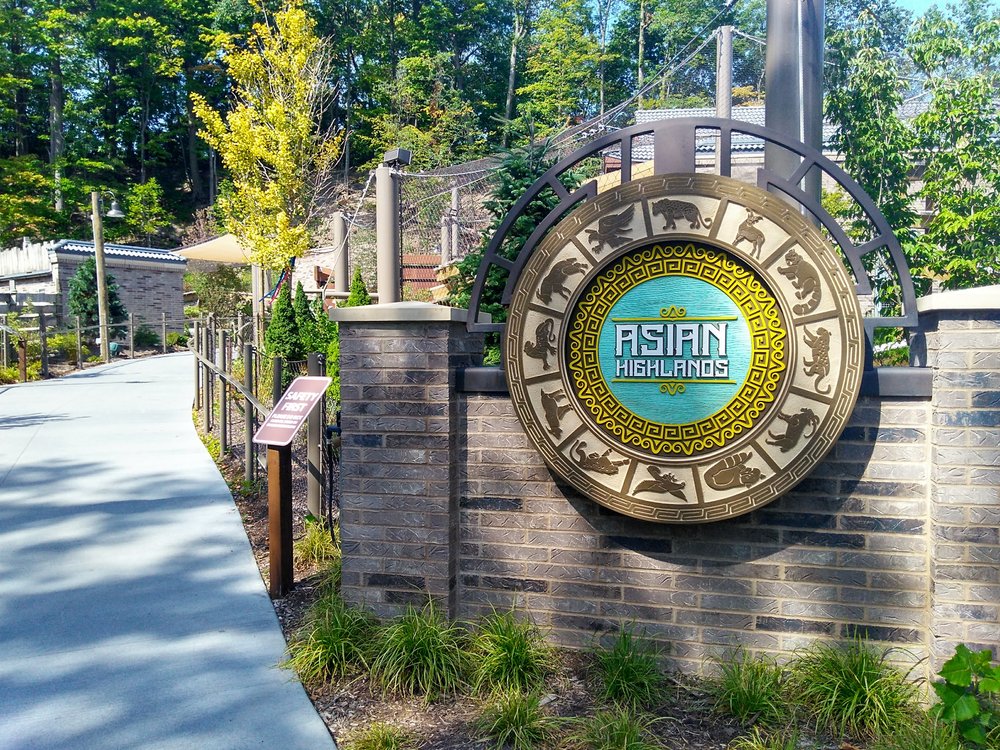

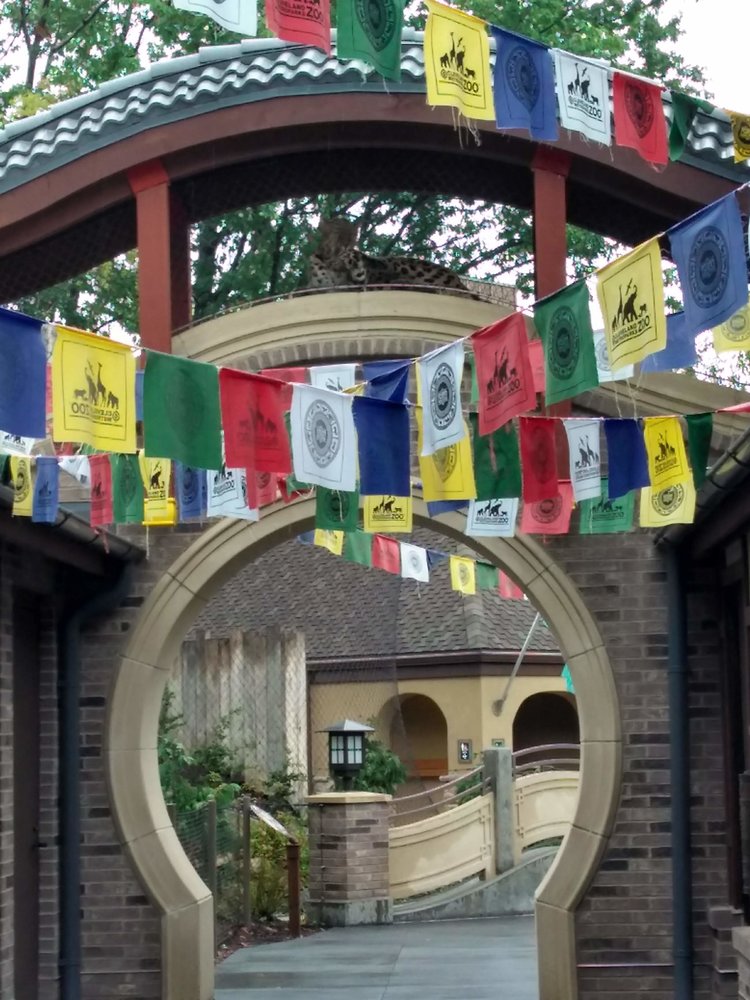
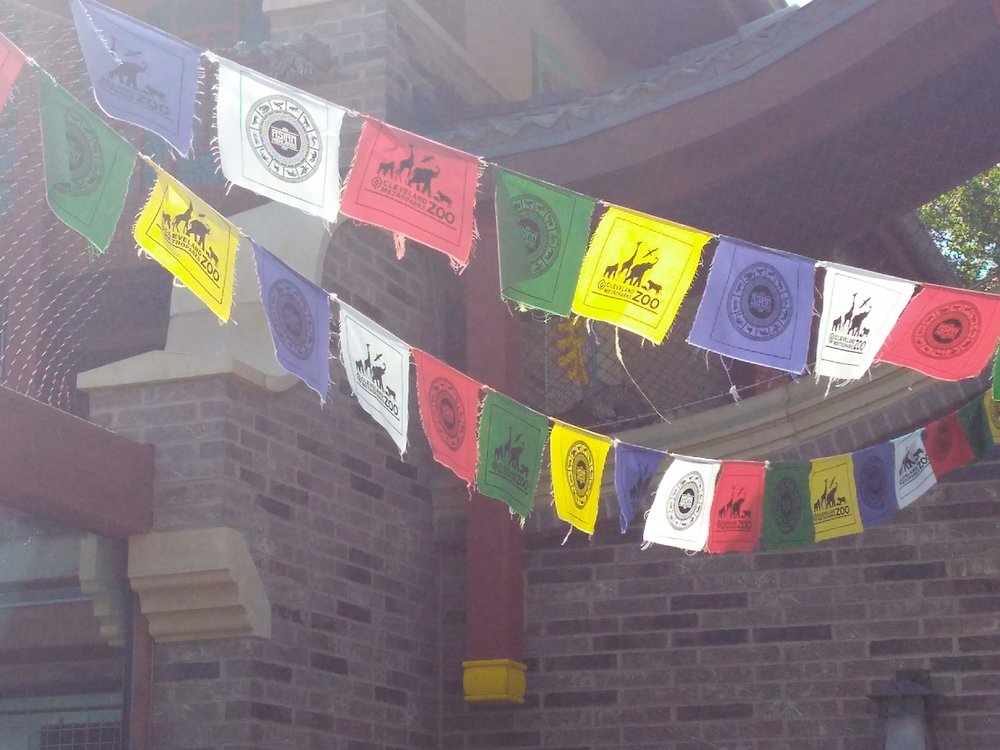
The red pandas, Amur leopard, and snow leopards inhabiting the new set piece were moved from their previous location over in Primate, Cat & Aquatics, while the zoo’s first takins (Himalayan goat-antelopes), arrived from the Columbus Zoo in June 2018.
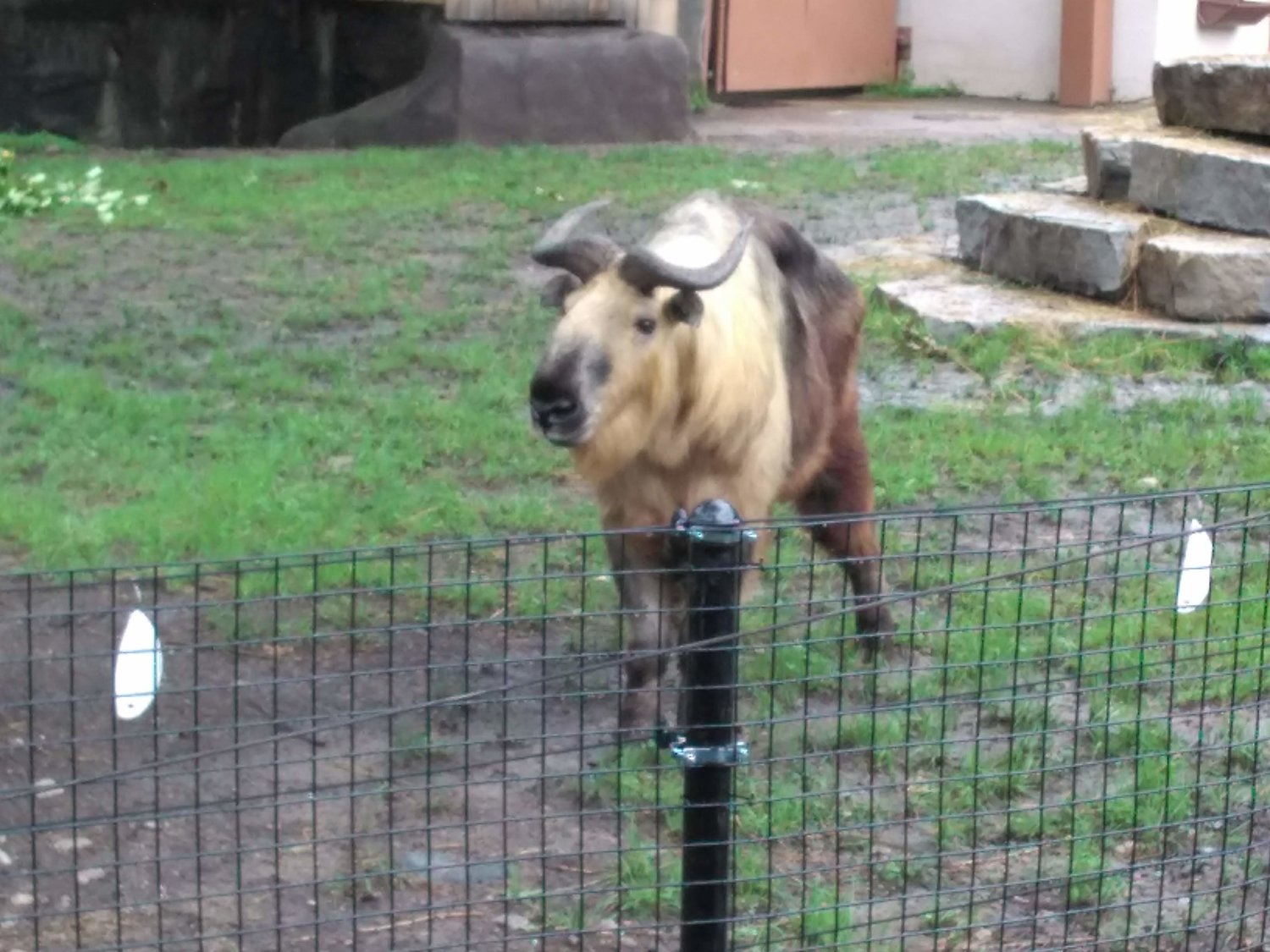
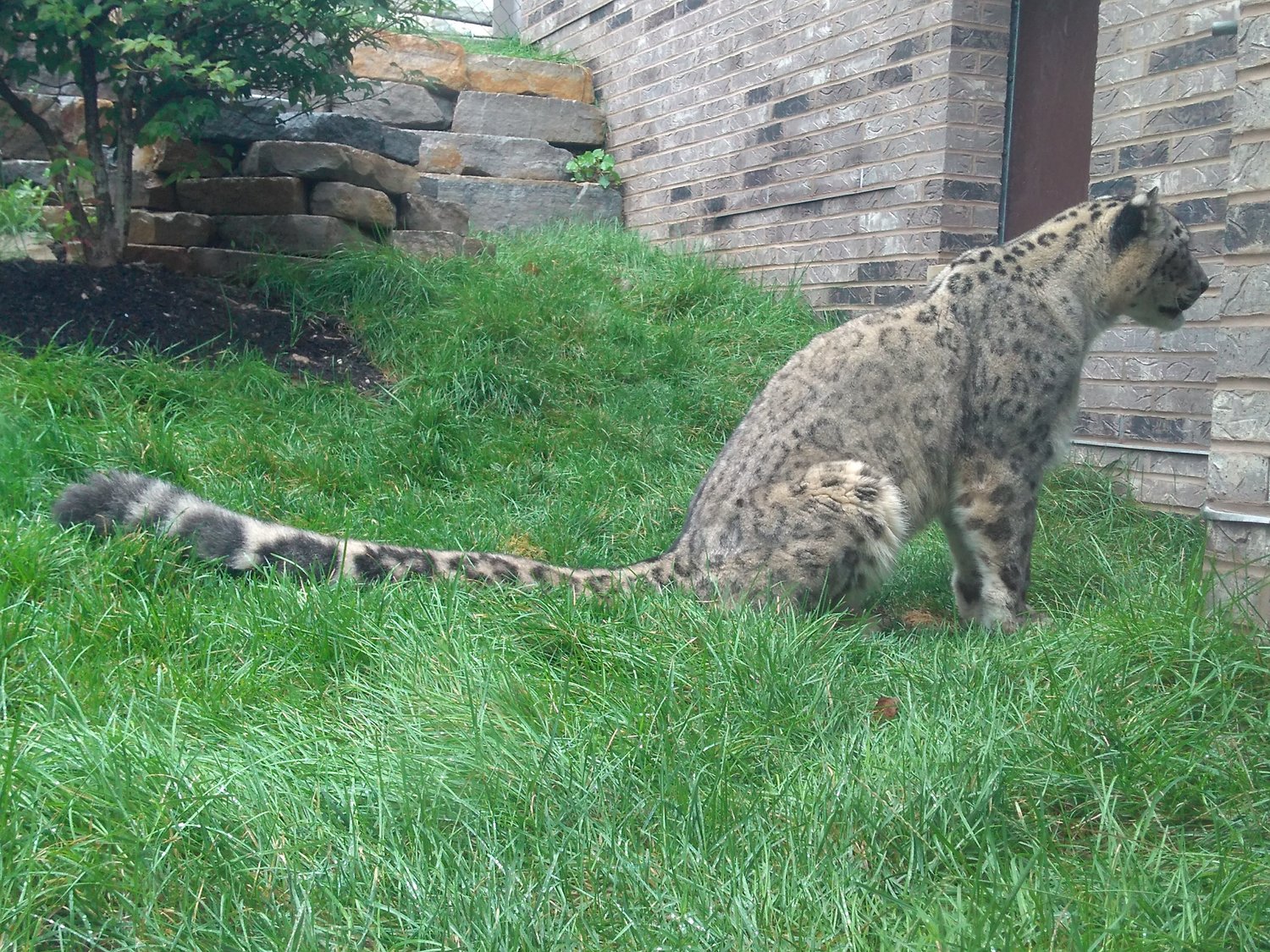
Below, Left to Right: Two of three baby snow leopards, born in May 2018; Dad, Amga (13), taking a nap in an overpass above one of the moon gates; Mom, Sombra (9), snoozing on a ledge above her brood. Amga and Sombra are typically kept separate, with the exception of mating season.
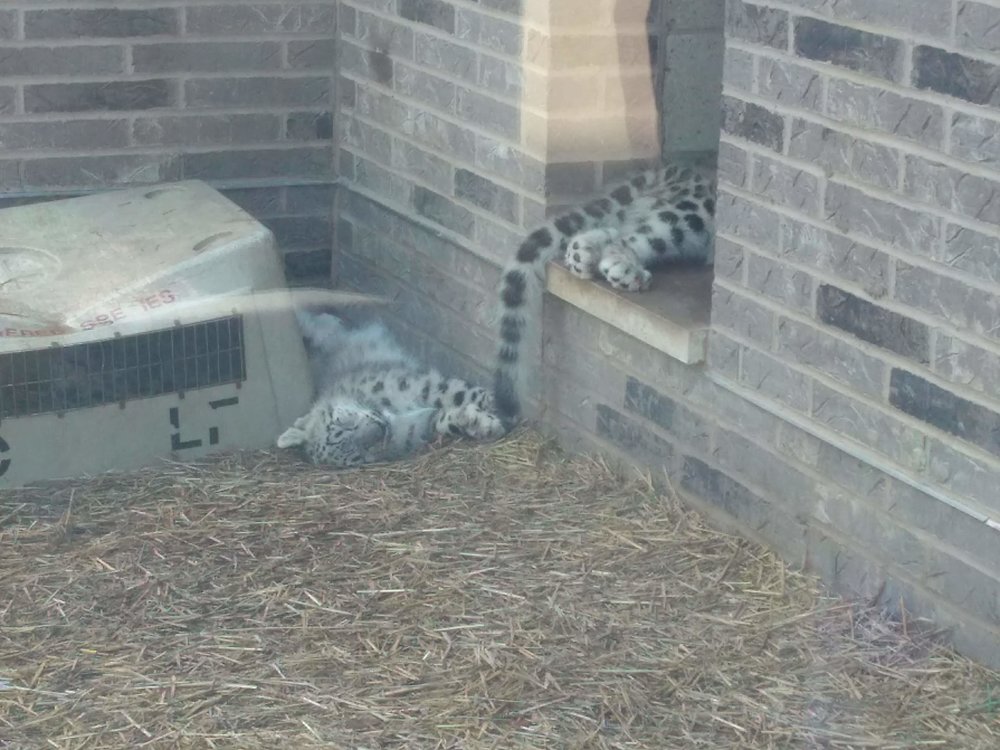
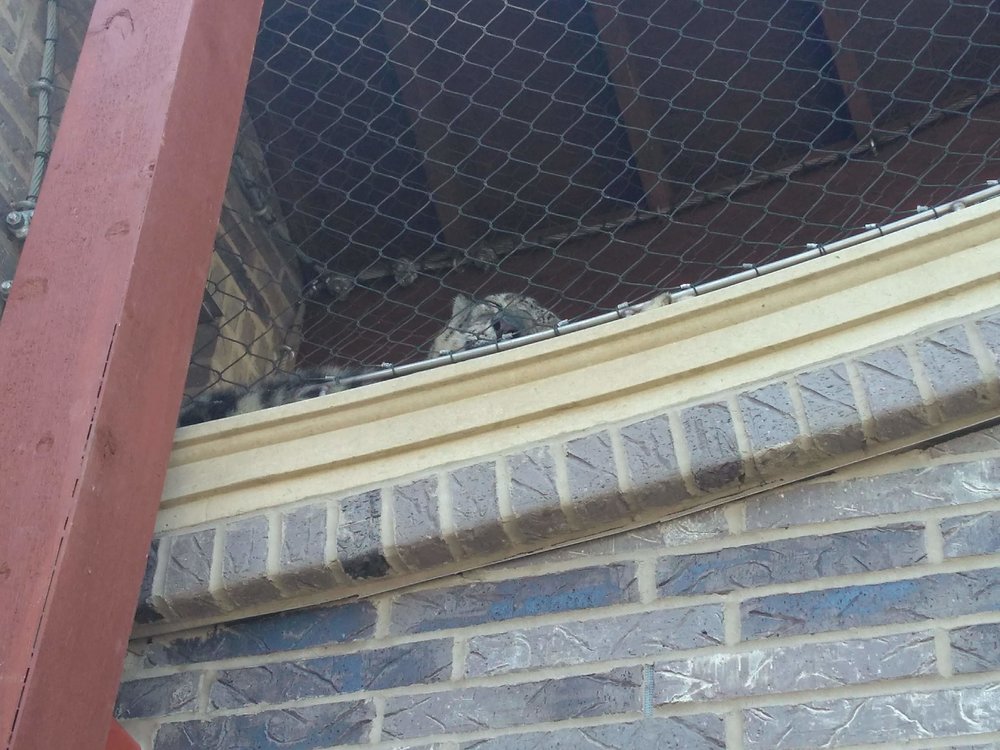
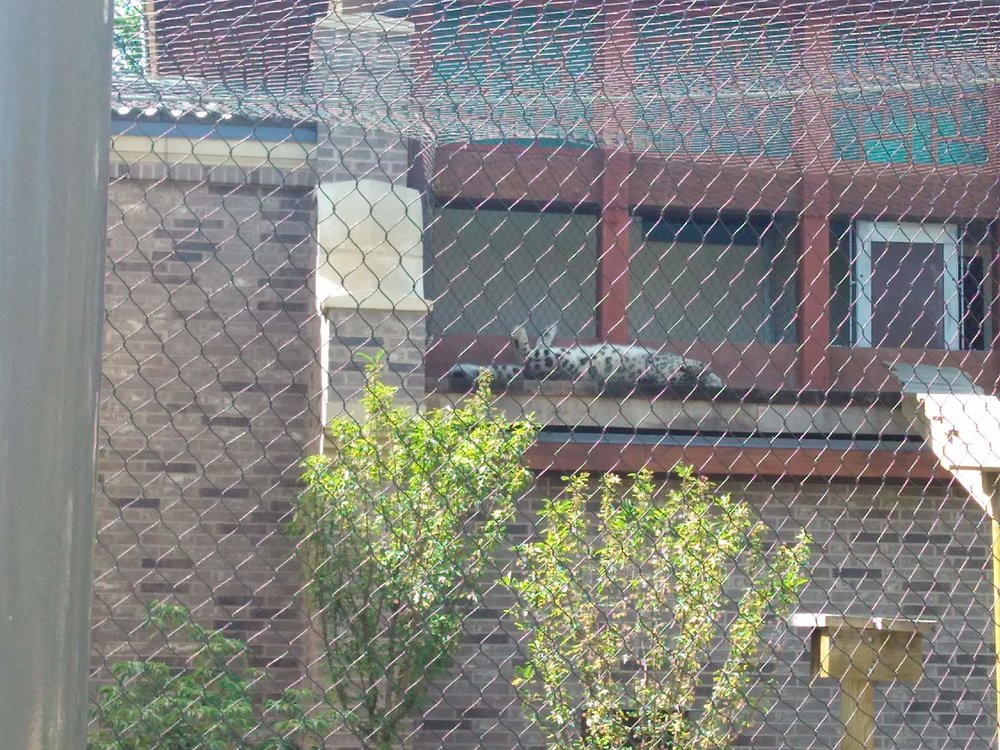
Moving on from Asian Highlands (an admittedly difficult task) brings us past the bears, Grizzly and North American Black, usually found playing, snacking, or merely lying around. Beside them are the sea lion and harbor seals, nearly always enthusiastically swimming in great circles, much to the delight of nearby children.
Young and old alike are sure to be delighted by the Rosebrough Tiger Passage, opened in June 2016, featuring four separate, connected habitat areas for the tiger's enjoyment, two of which are overhead pathways, or cat walks, if you will. At $4.1 million, the 15,500 square feet of habitat contains heated rocks (for the Amur tigers and visitors!), aquatic areas, and vertical climbing poles, as well as the required space for a breeding pair and cubs. The space was named for Carol and Walt Rosebrough, Northeast Ohio philanthropists.
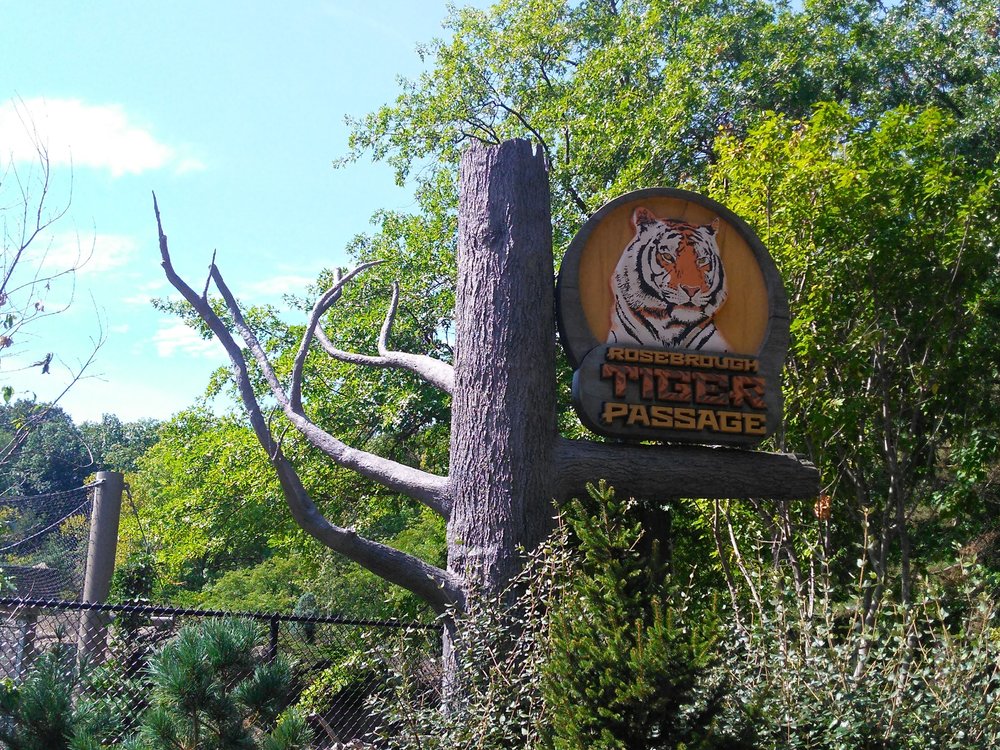

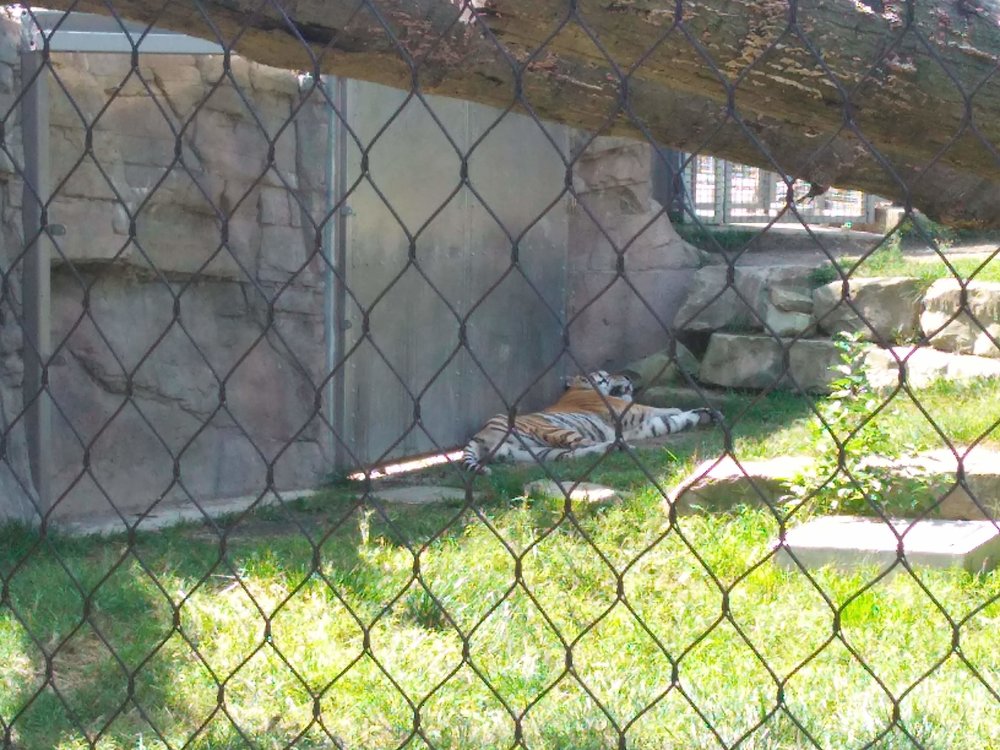
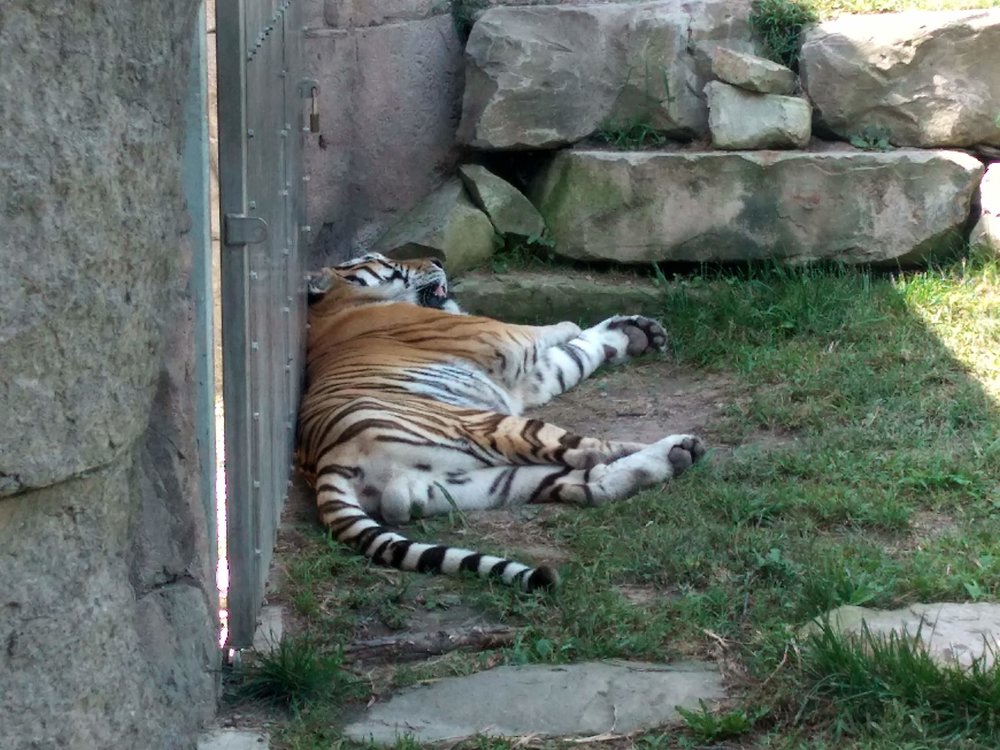
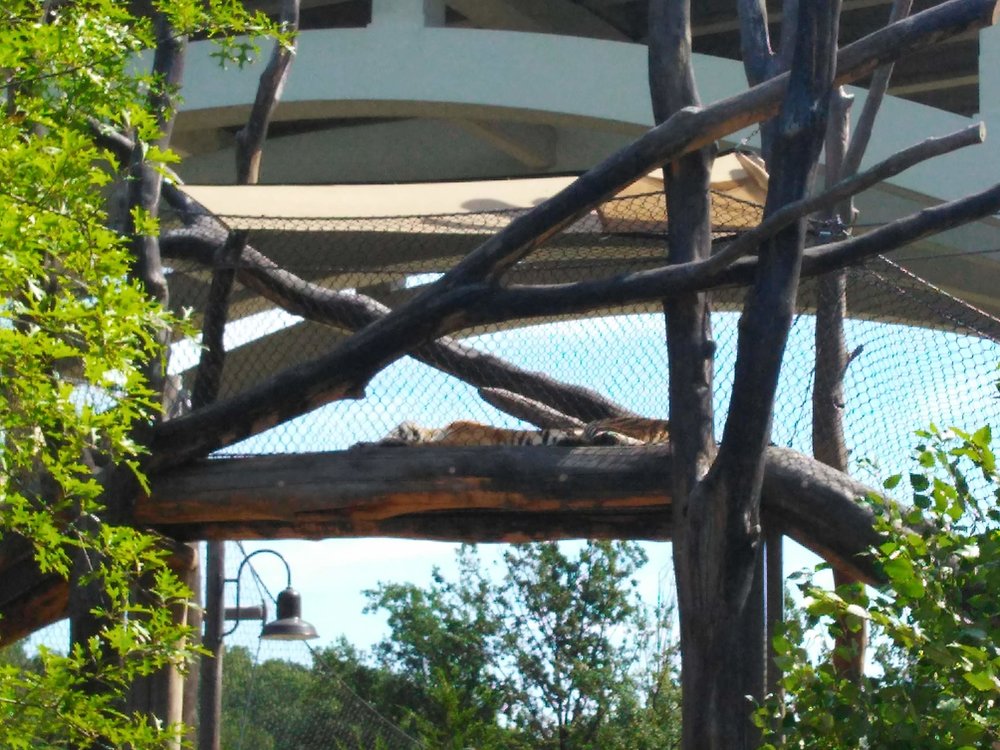
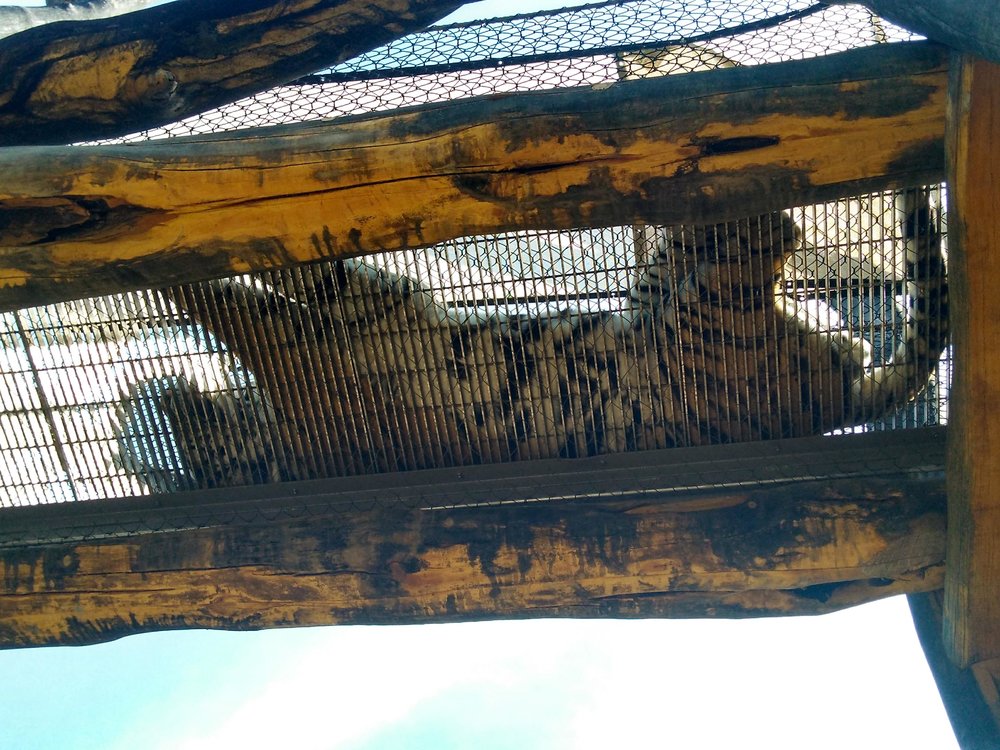
Once we’ve passed through the tigers, it’s back on the trail down to African Savannah, where we will take the outer path around the large, green enclosure. Taking the inner trail, secluded by long, wavy grasses, offers up-close looks at the ostrich, zebras, and other African fauna. Across the way is the Sarah Allison Steffee Center for Zoological Medicine; an adjacent pavilion provides public education on aspects of veterinary care at the Cleveland Zoo.

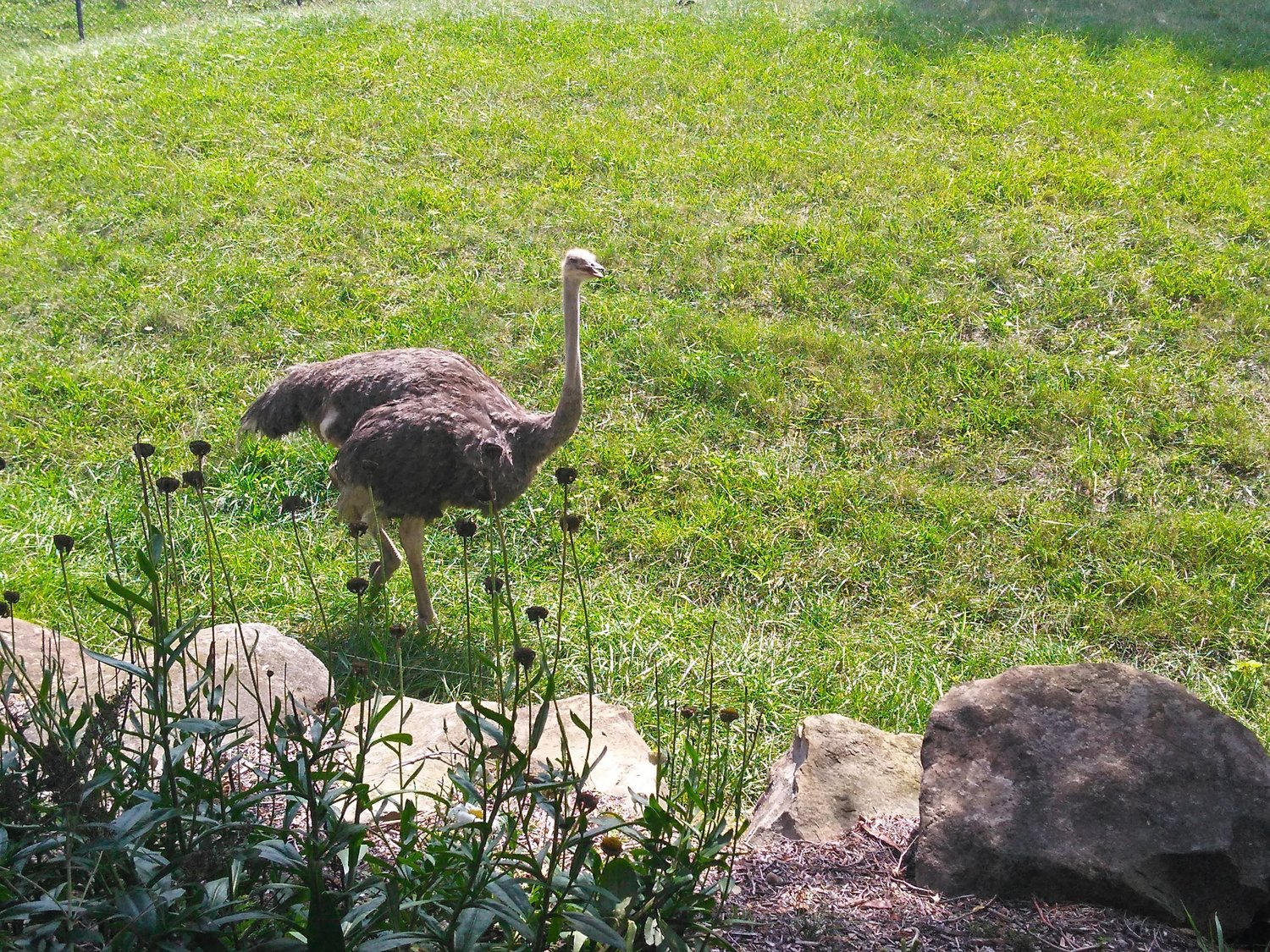

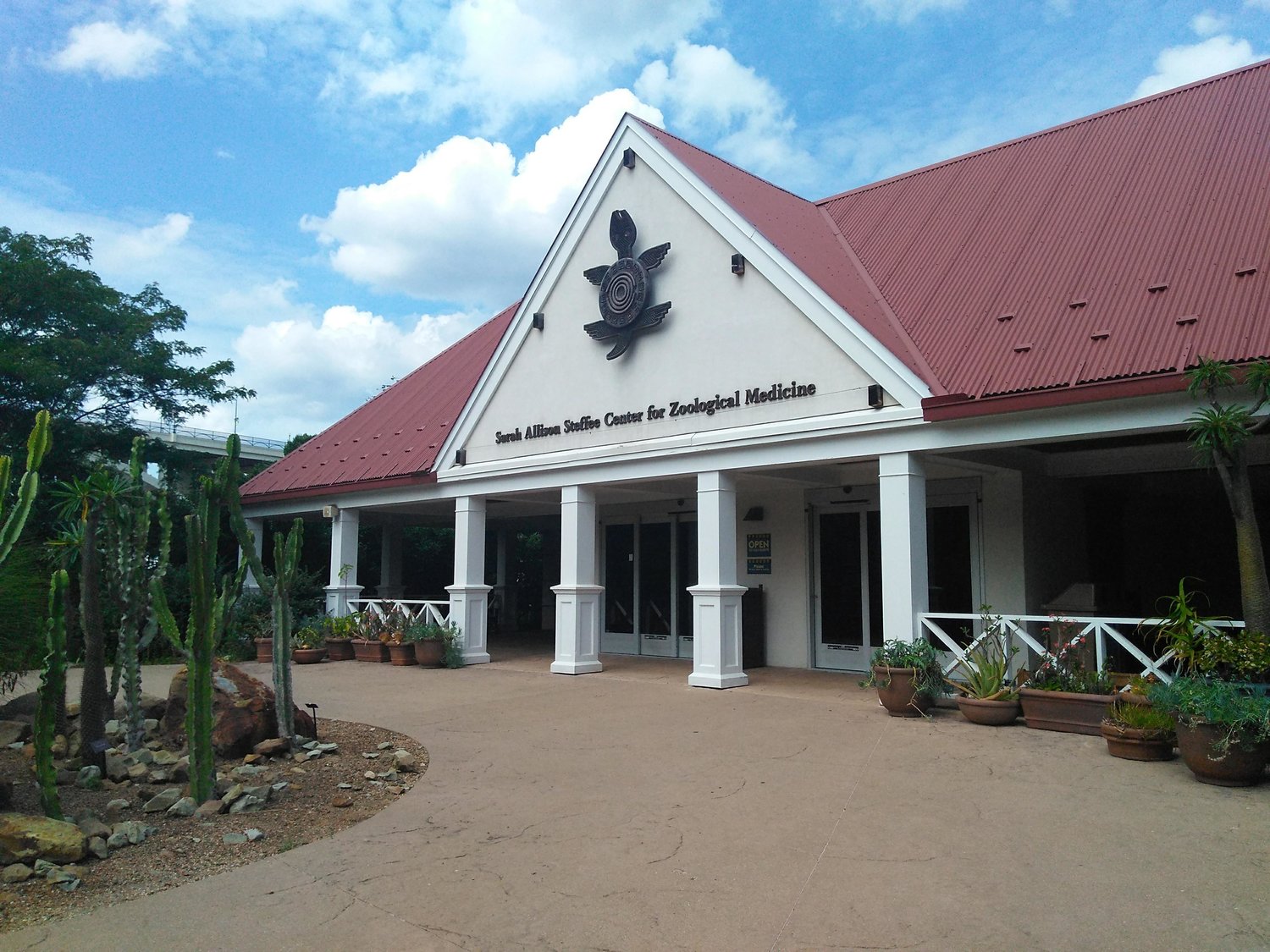
Next to the Center are the rhinos, who welcomed baby Lulu on 7 February 2018 to mom Kibibbi and father Forrest. Lulu is the sixth eastern black rhino born at the zoo, Kibibbi was also born there. Forrest arrived in June 2016. Lulu is his first calf, and Kibibbi’s third.
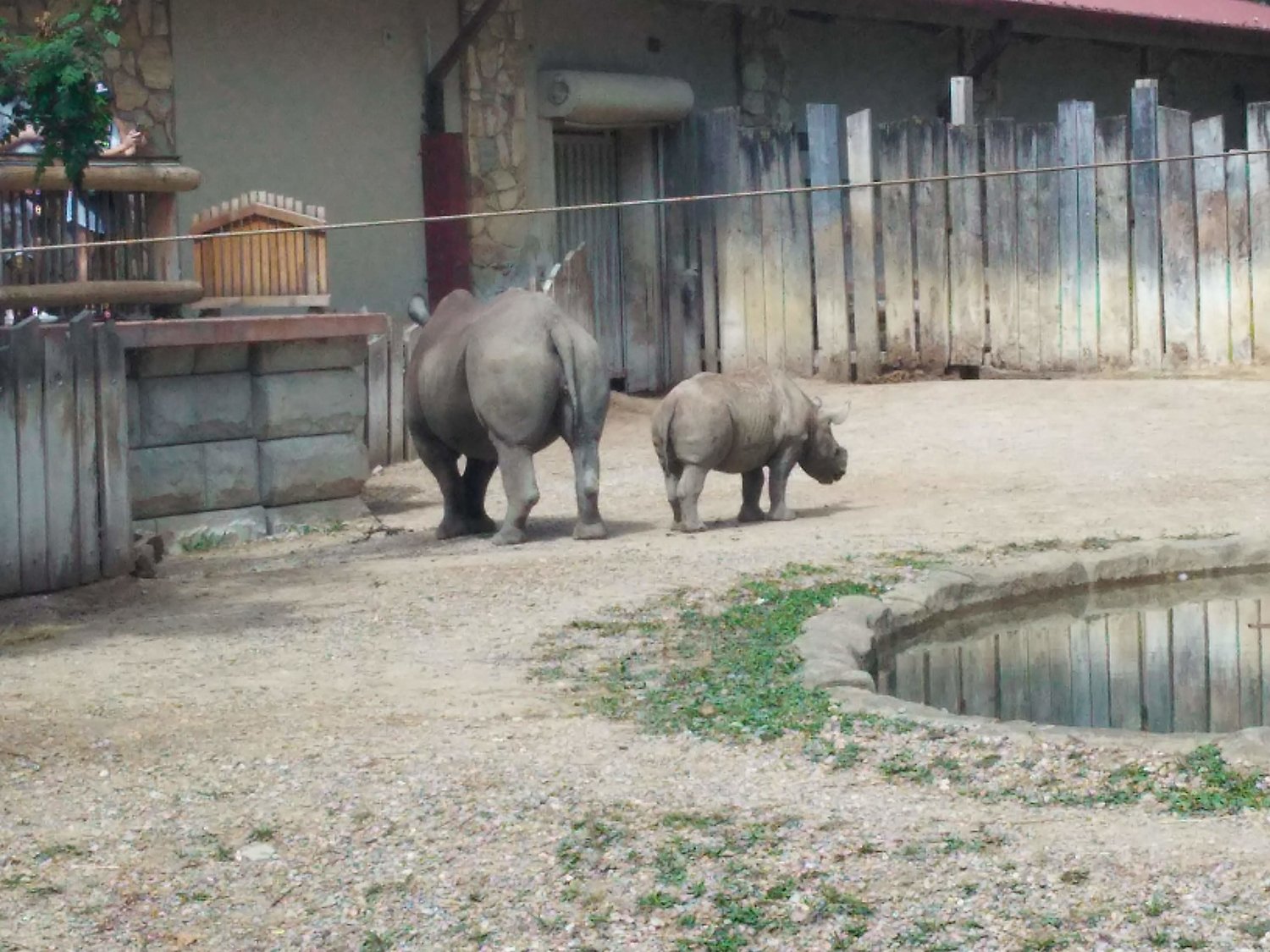
Apparently rhinos, like humans, have personal likes and dislikes when it comes to one another, and neither Kibibbi or her mother Inge are overly fond of Forrest (although Inge gave birth to Forrest’s second calf on 20 August 2018). The zoo guide on rhino duty told the story: Fairly recently, when the rhinos were in their indoor enclosure, Forrest was in his stall and got too close to Kibibbi, who was with Lulu in their neighboring stall. She lunged at him with her horn, banging it against the metal bar and ending with it cracking near the base. The veterinary staff had to trim her horn down, resulting in Kibibbi’s somewhat altered appearance.
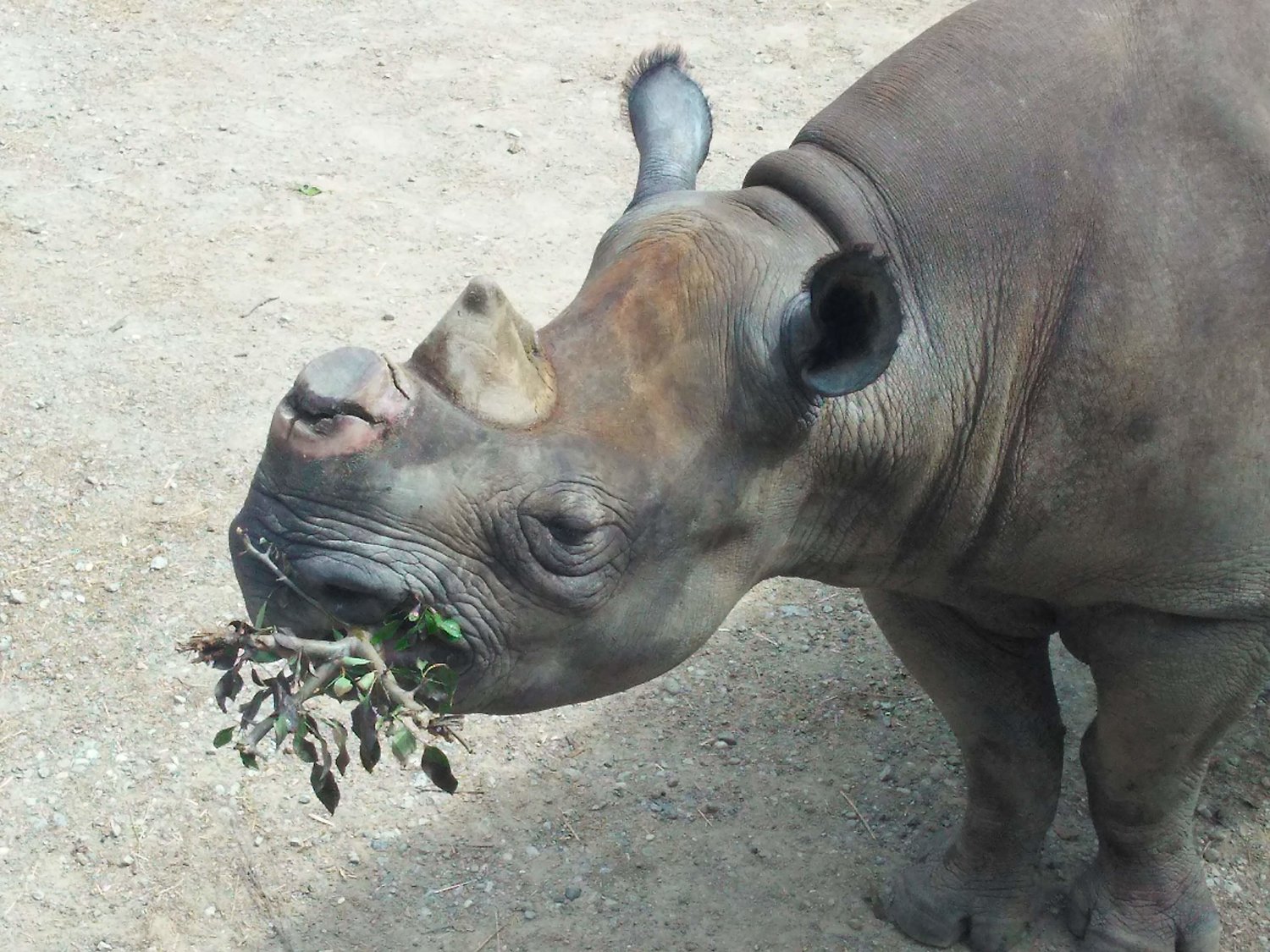
Once we’ve enjoyed our fill of adorable baby rhinos (or our kids/spouse/friends want us to hurry up already), it’s over to the 360° walk-around Monkey Island, and then we’re back where we started, in front of the Exhibit Hall. But fret not, zoogoers, because the Cleveland Zoo has another treat waiting for us. Head on out the main gate to the path under the twisted boughs of trees: We’re going to The Rainforest.

Additional Reading:
https://case.edu/ech/articles/c/cleveland-metroparks-zoo
https://clevelandhistorical.org/items/show/506
https://www.clevelandmetroparks.com/zoo/learn/zoo-history
https://www.clevelandzoosociety.org/who-we-are/history-accomplishments
https://www.clevelandzoosociety.org/z/2018/08/29/inges-important-role
https://fox8.com/2018/04/13/live-video-baby-rhino-lulu-makes-public-debut-at-cleveland-metroparks-zoo/

